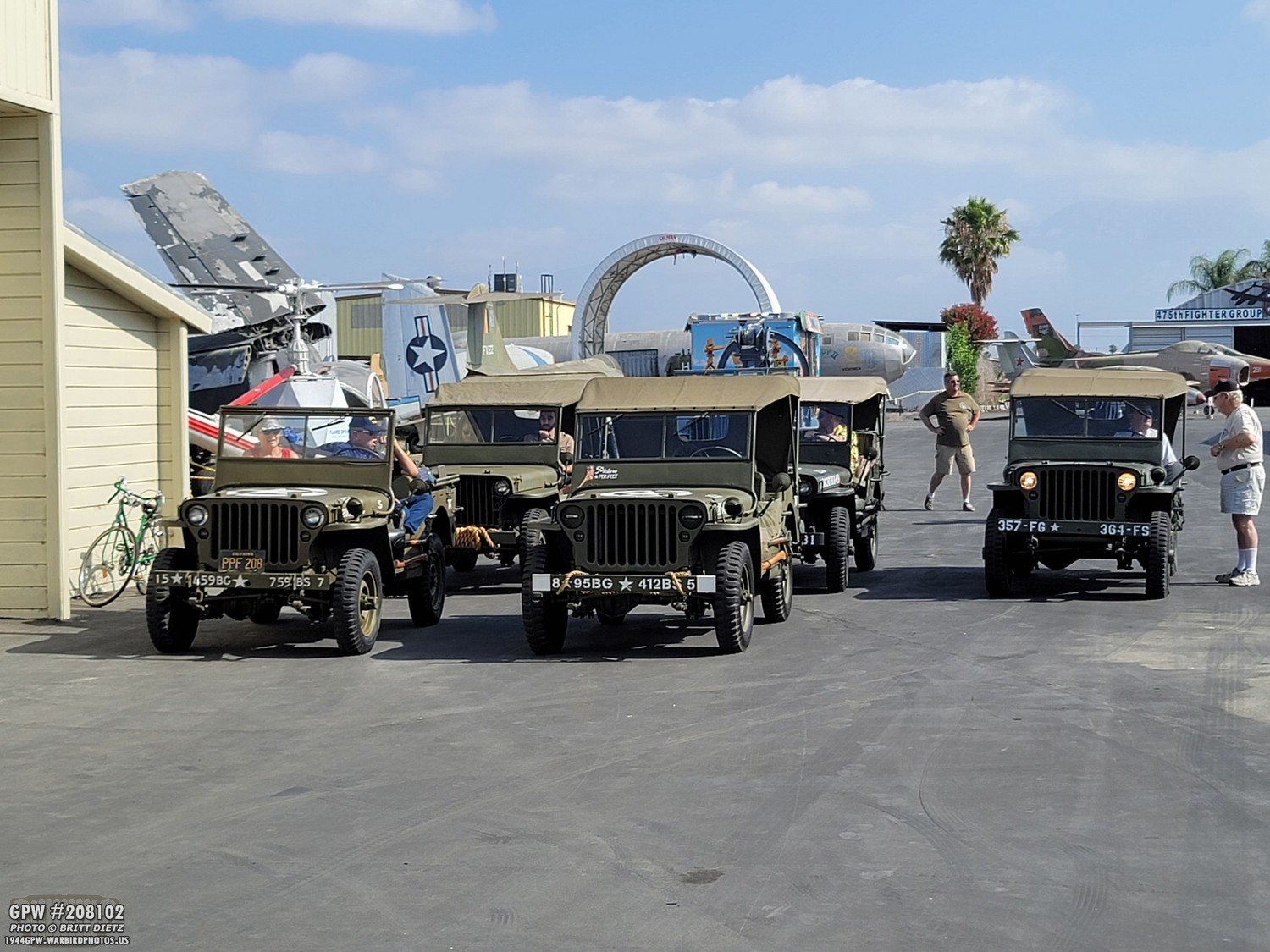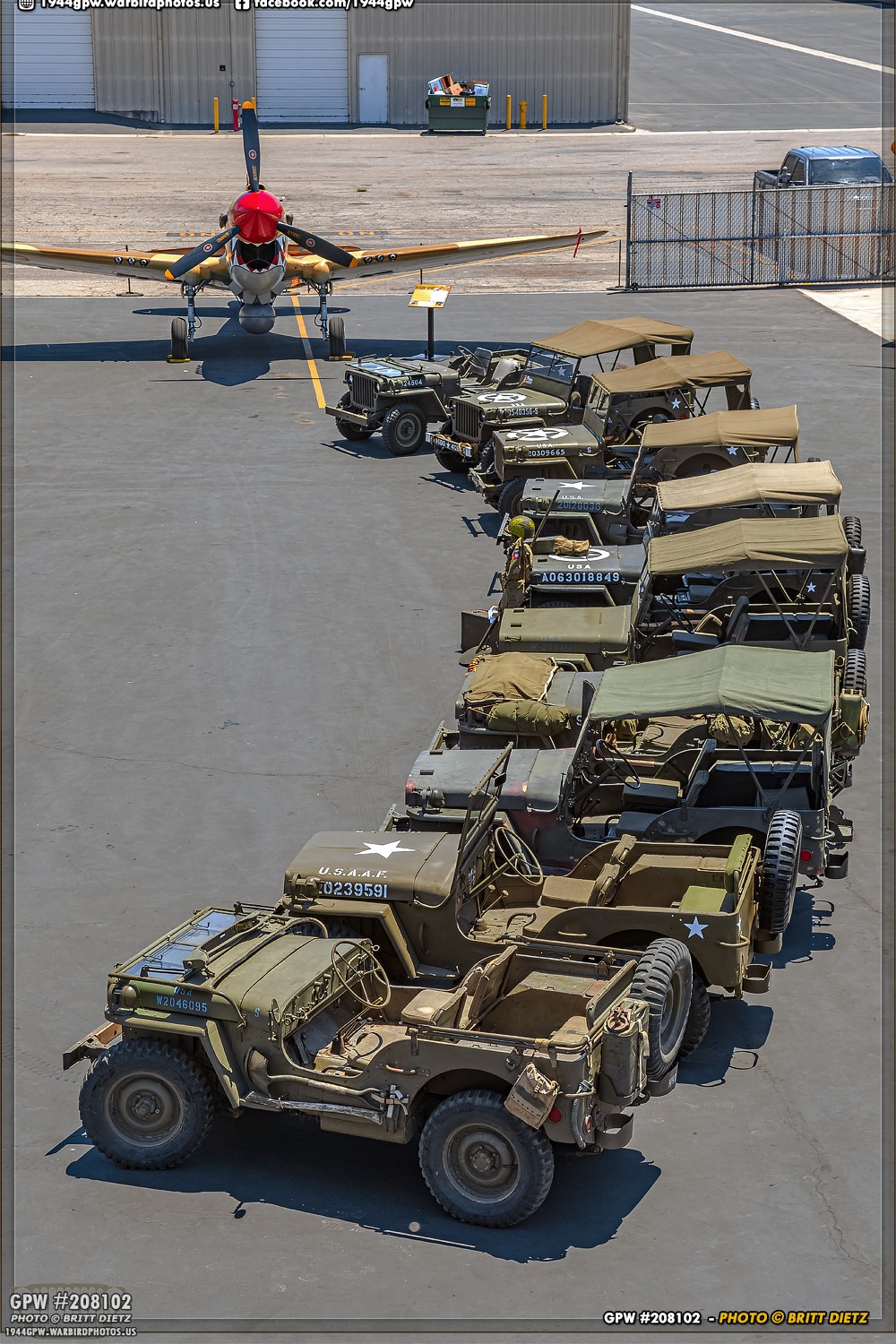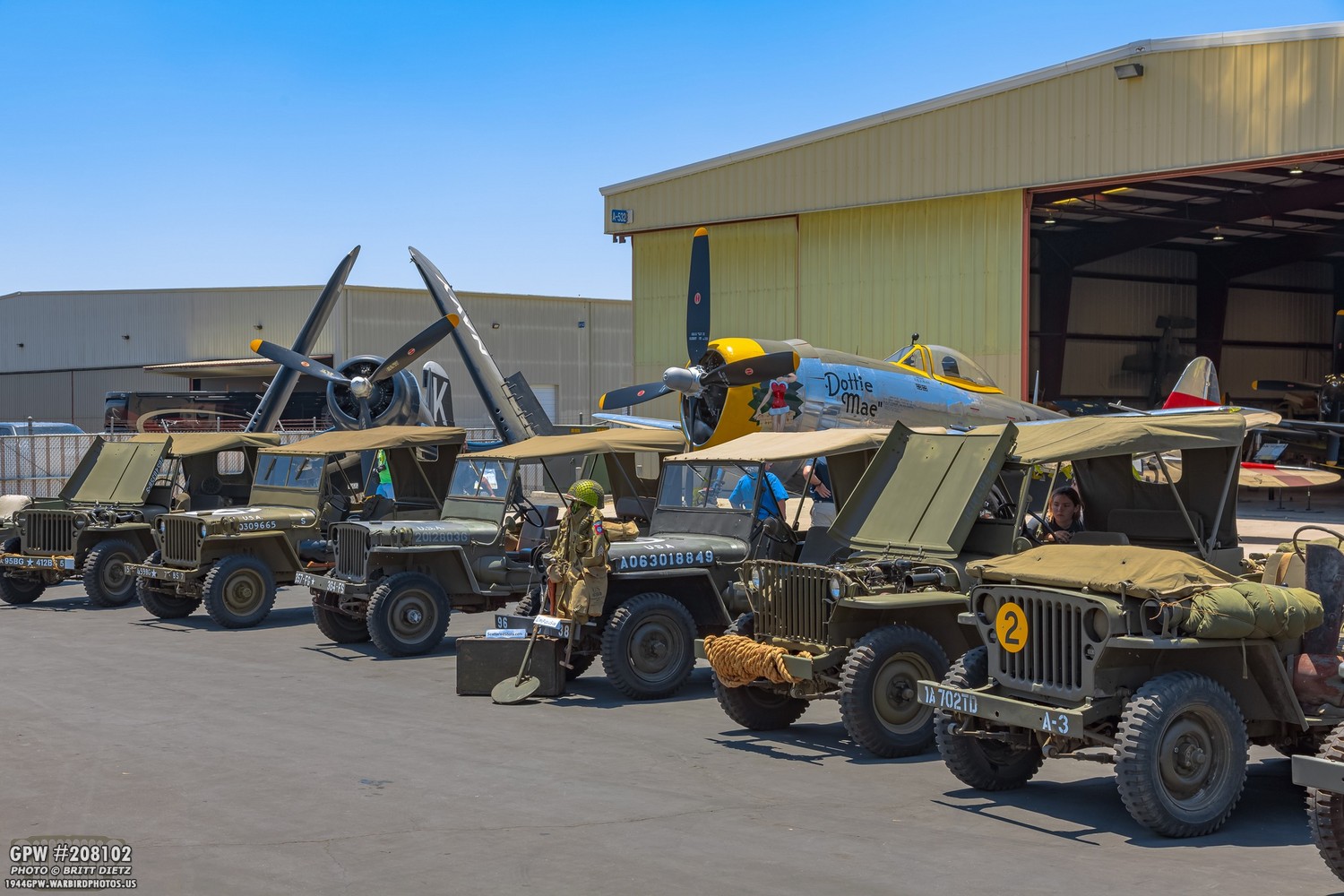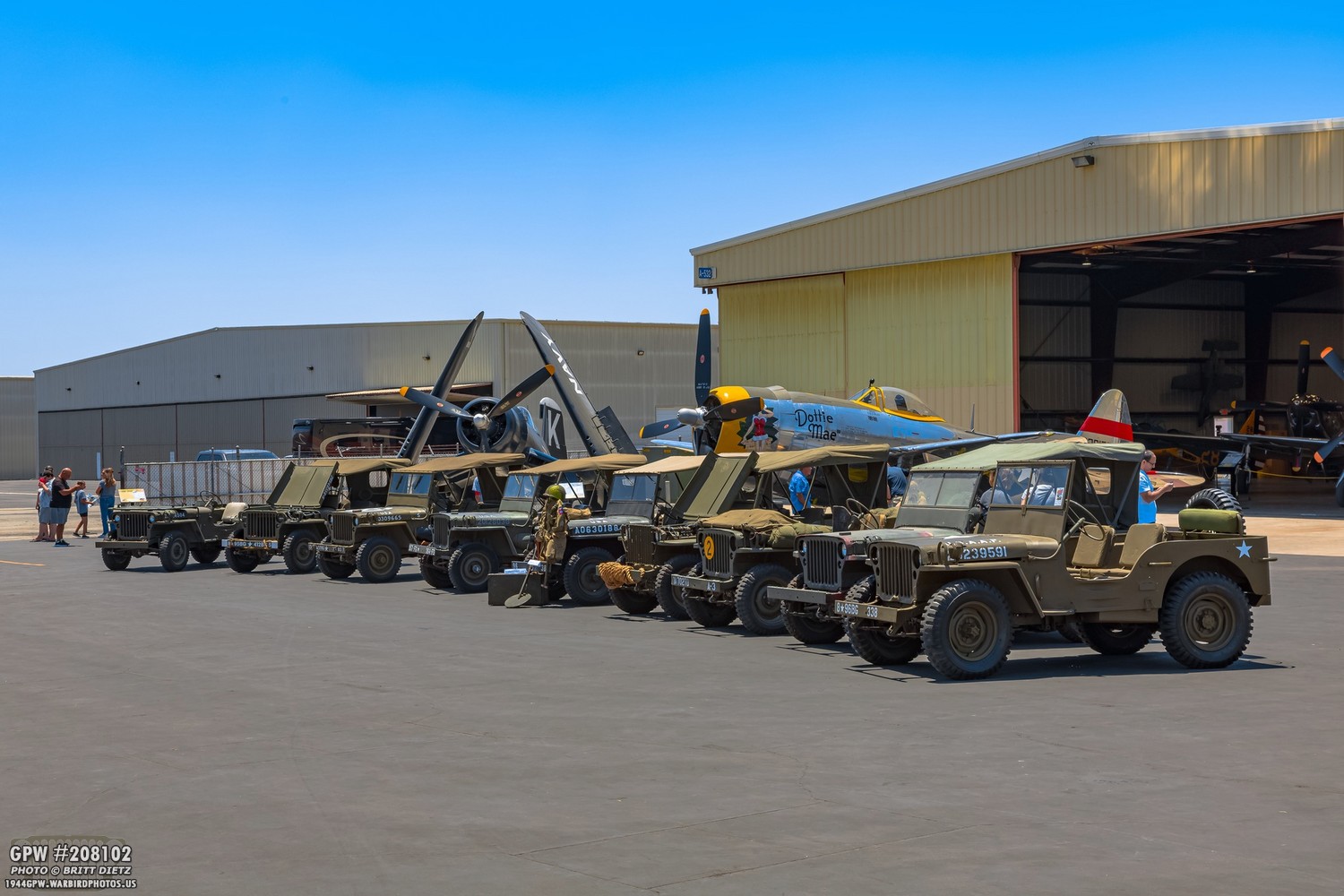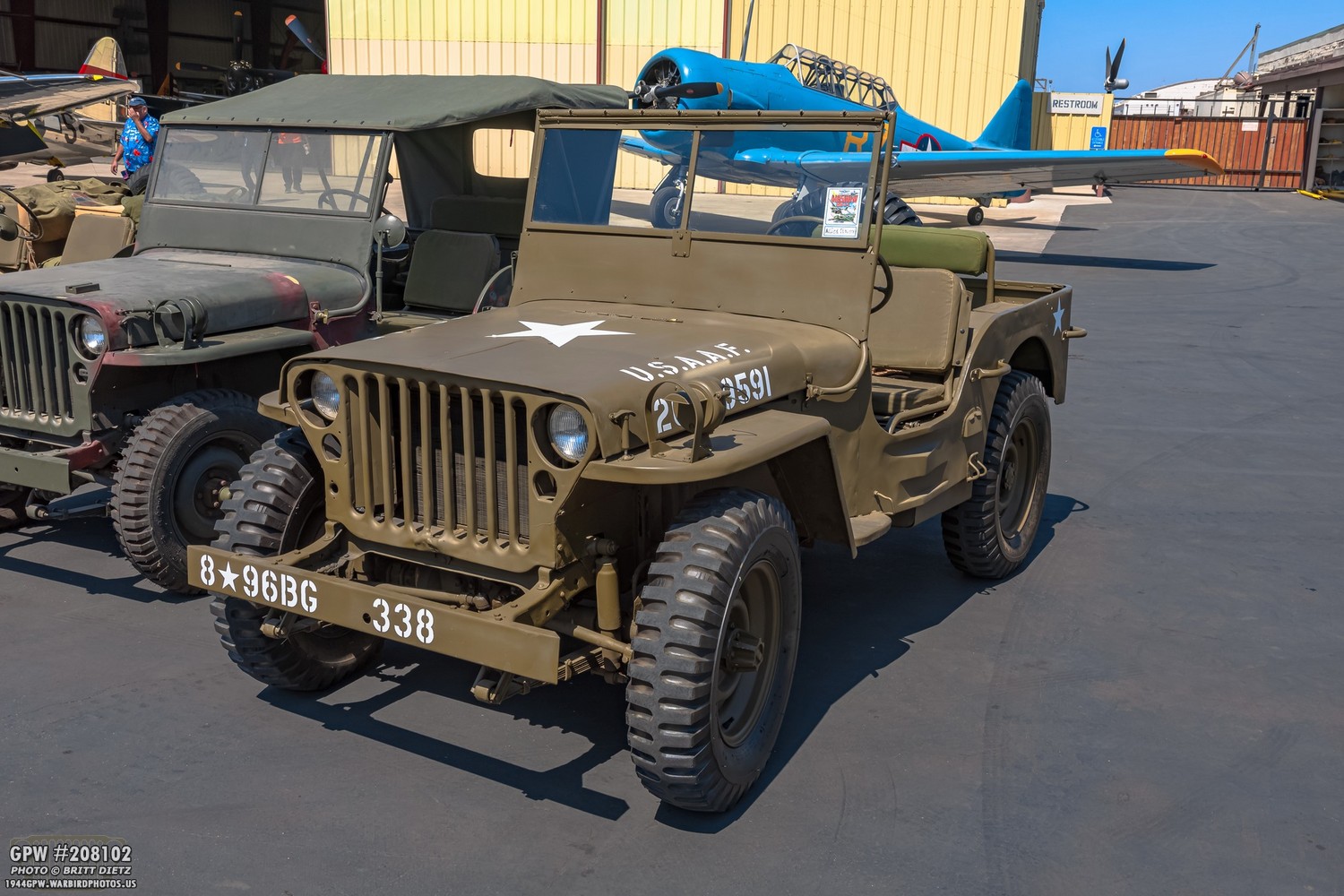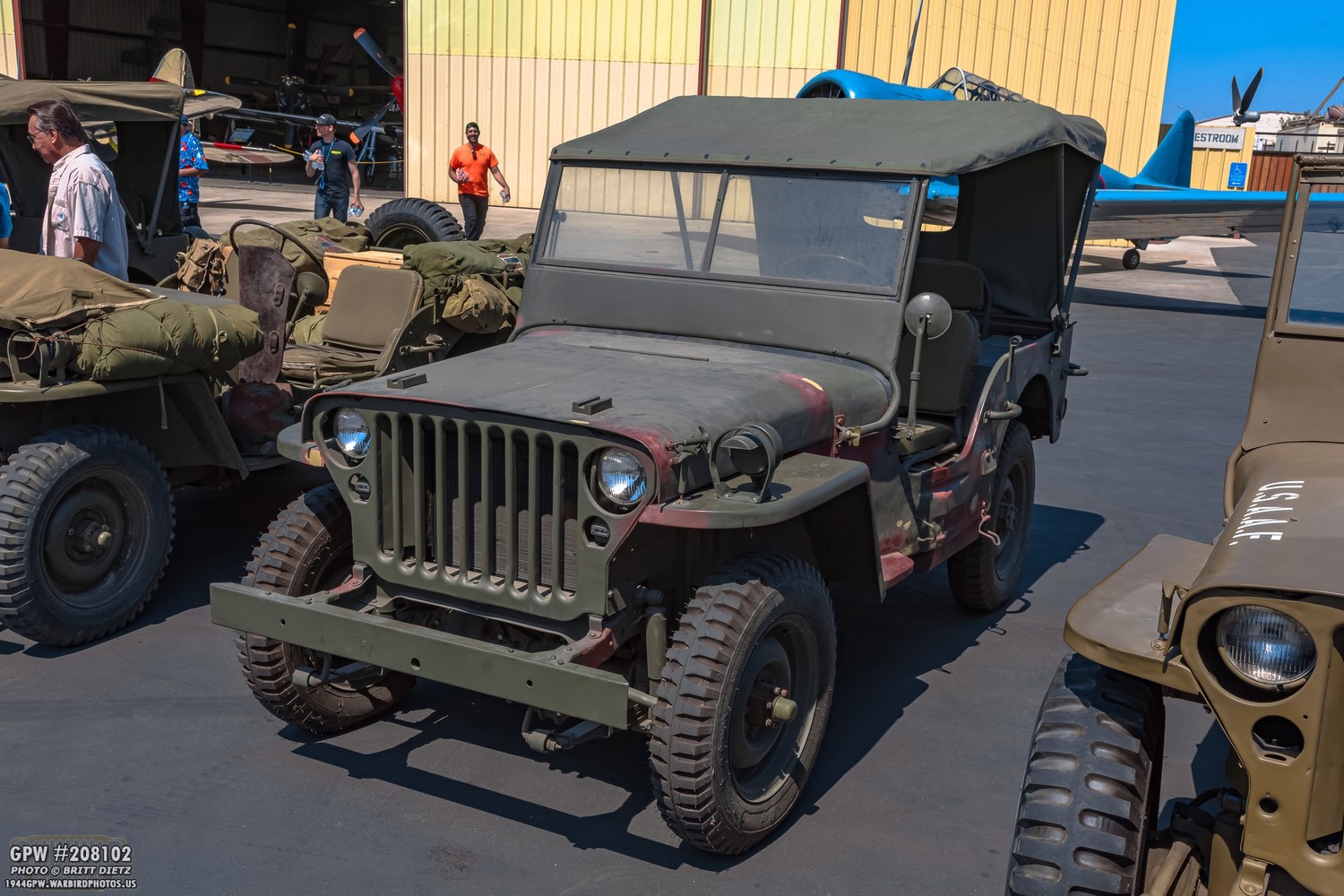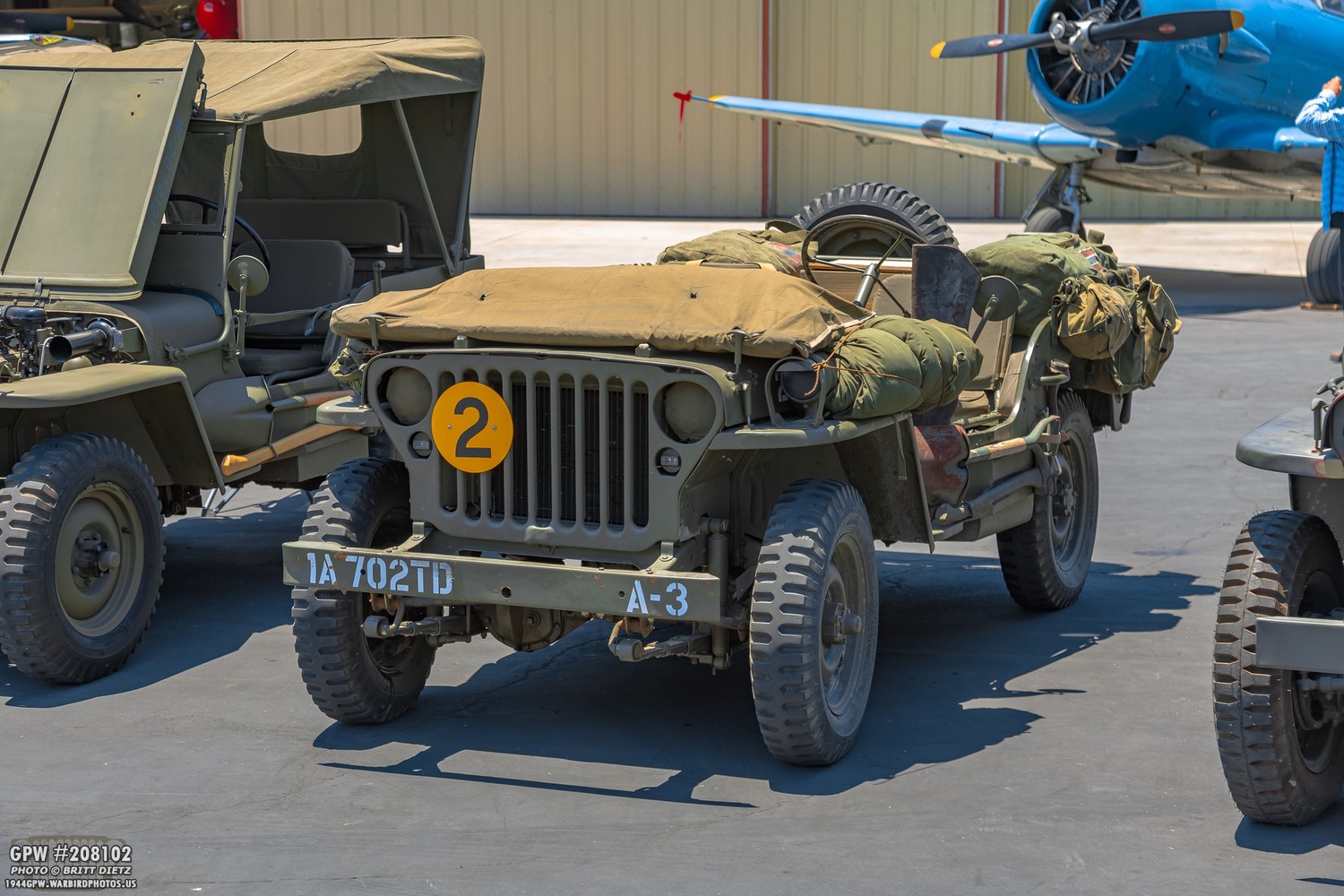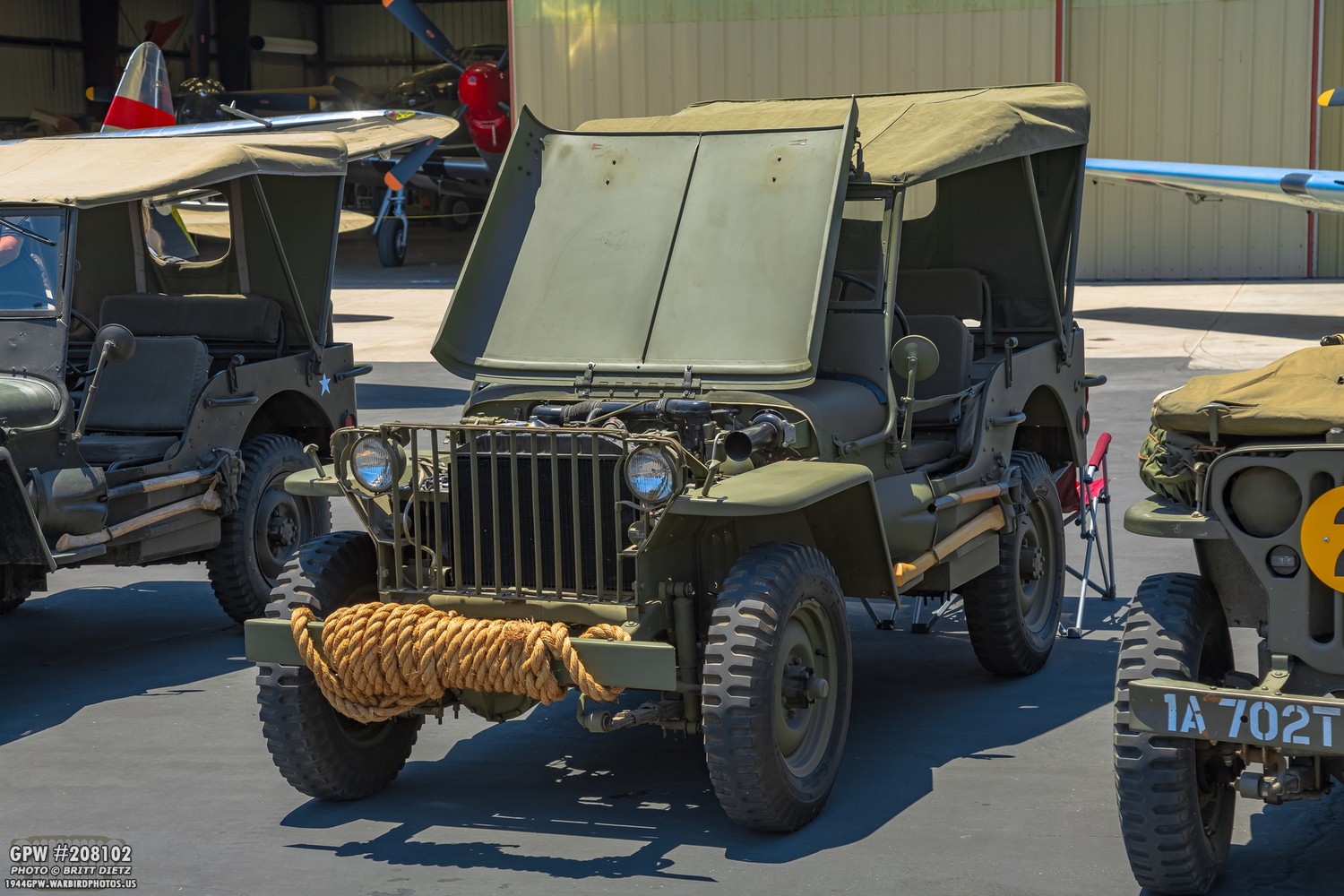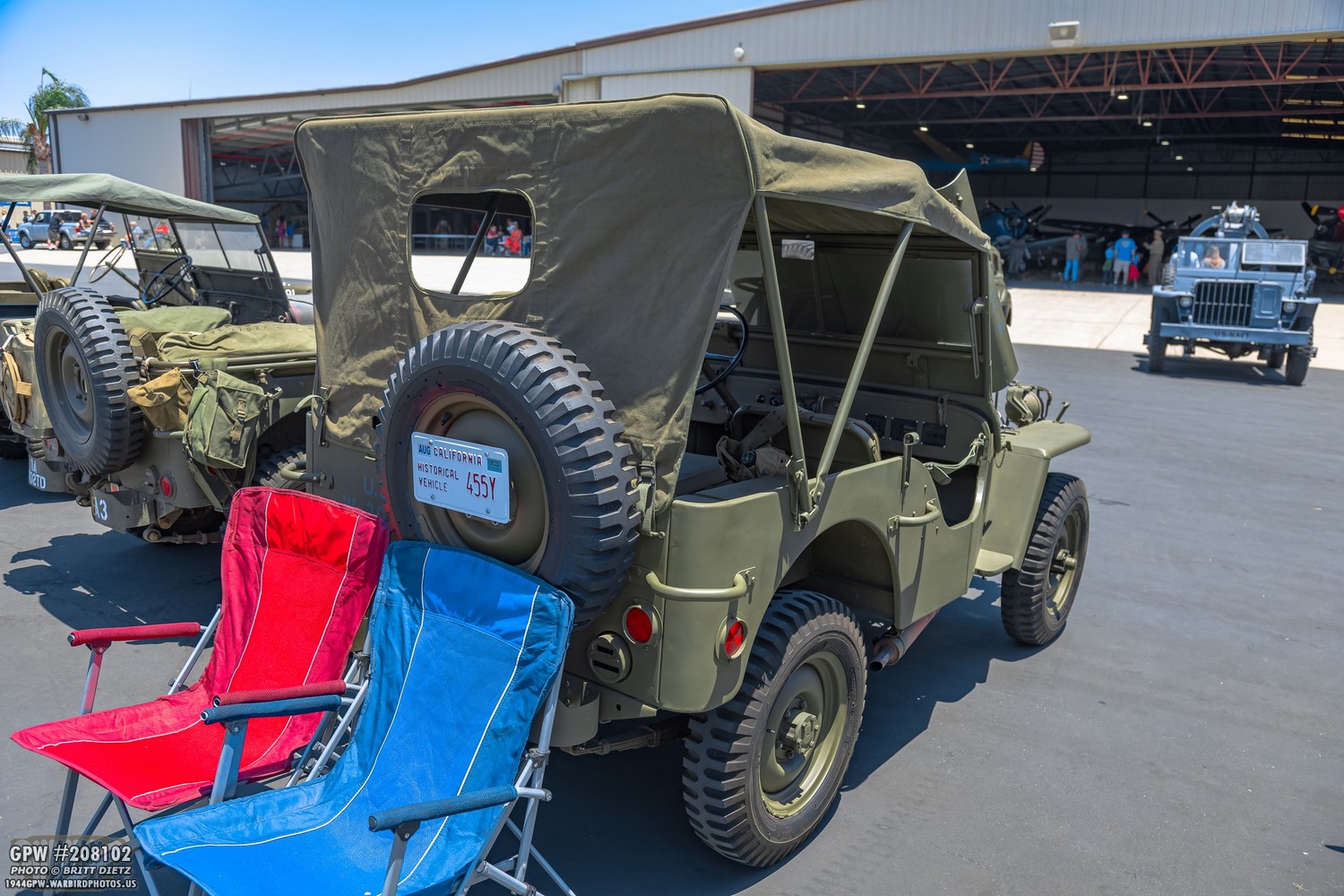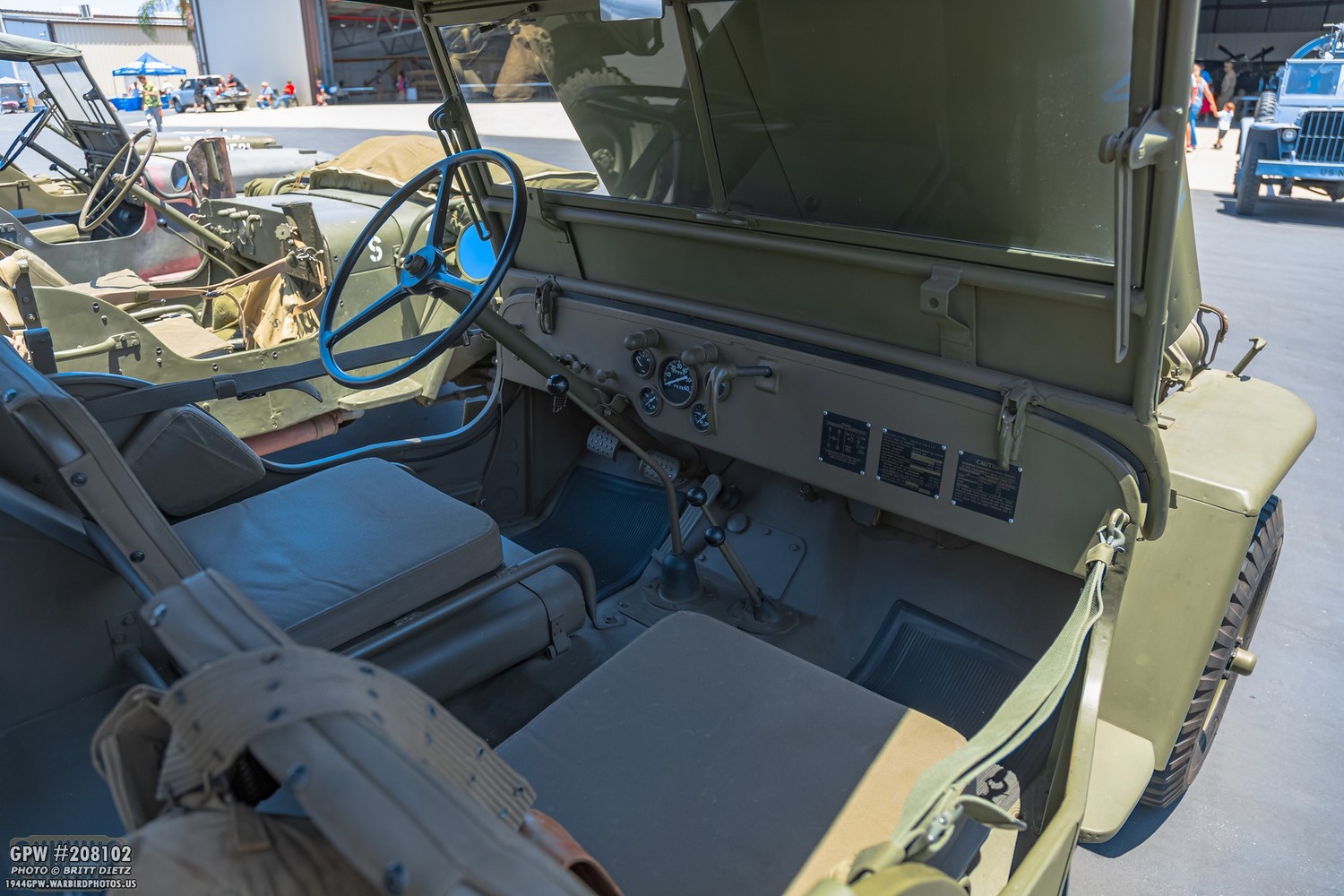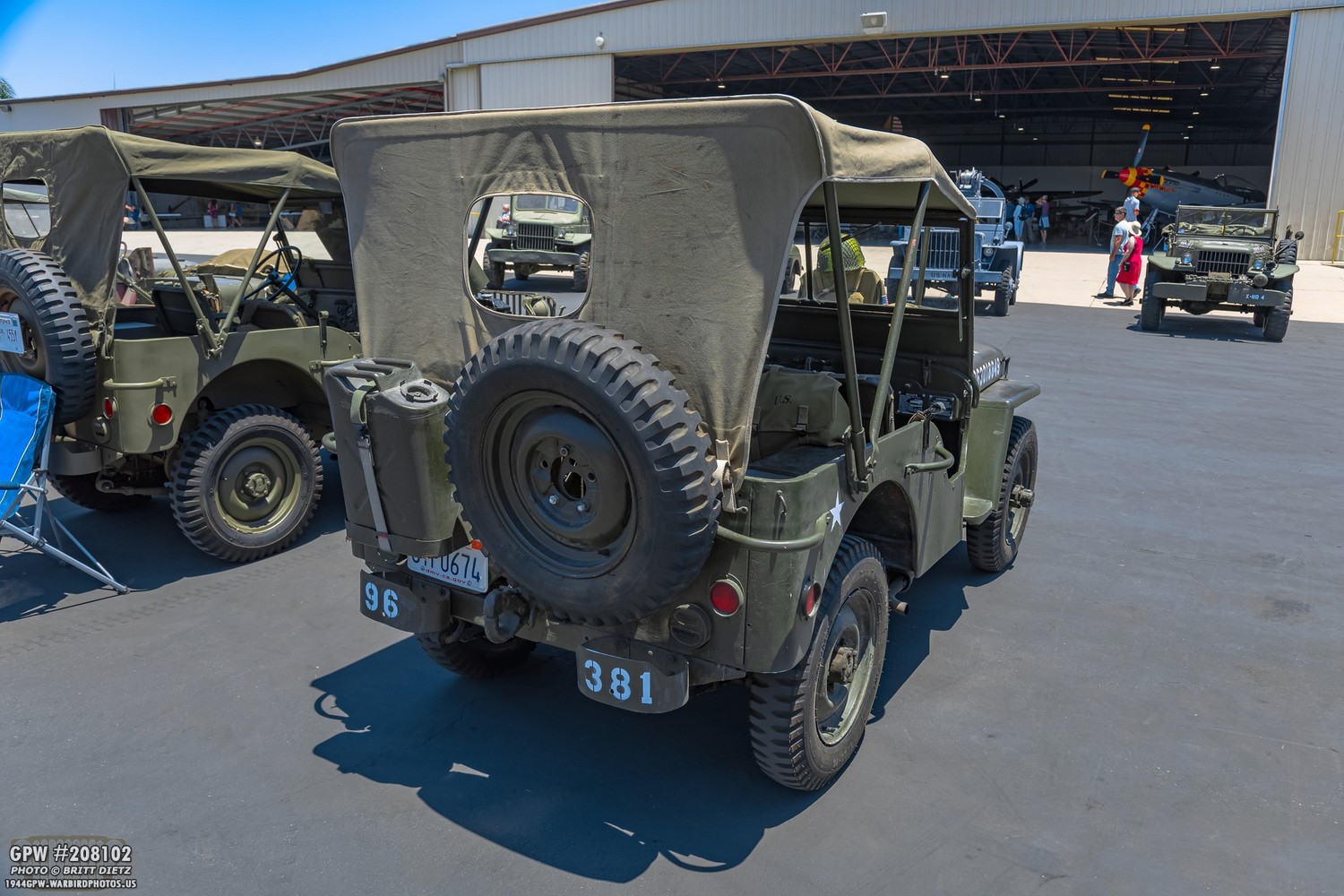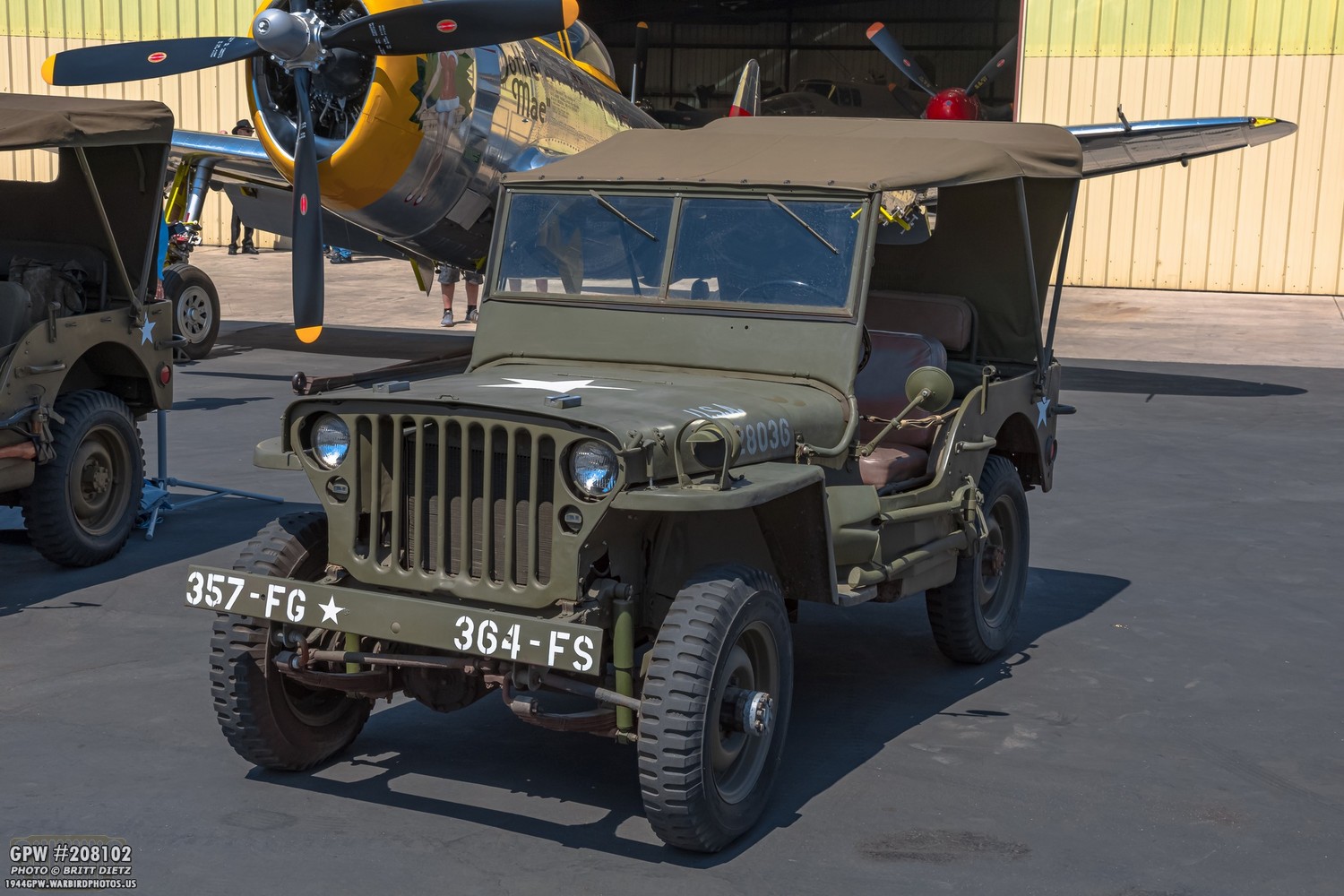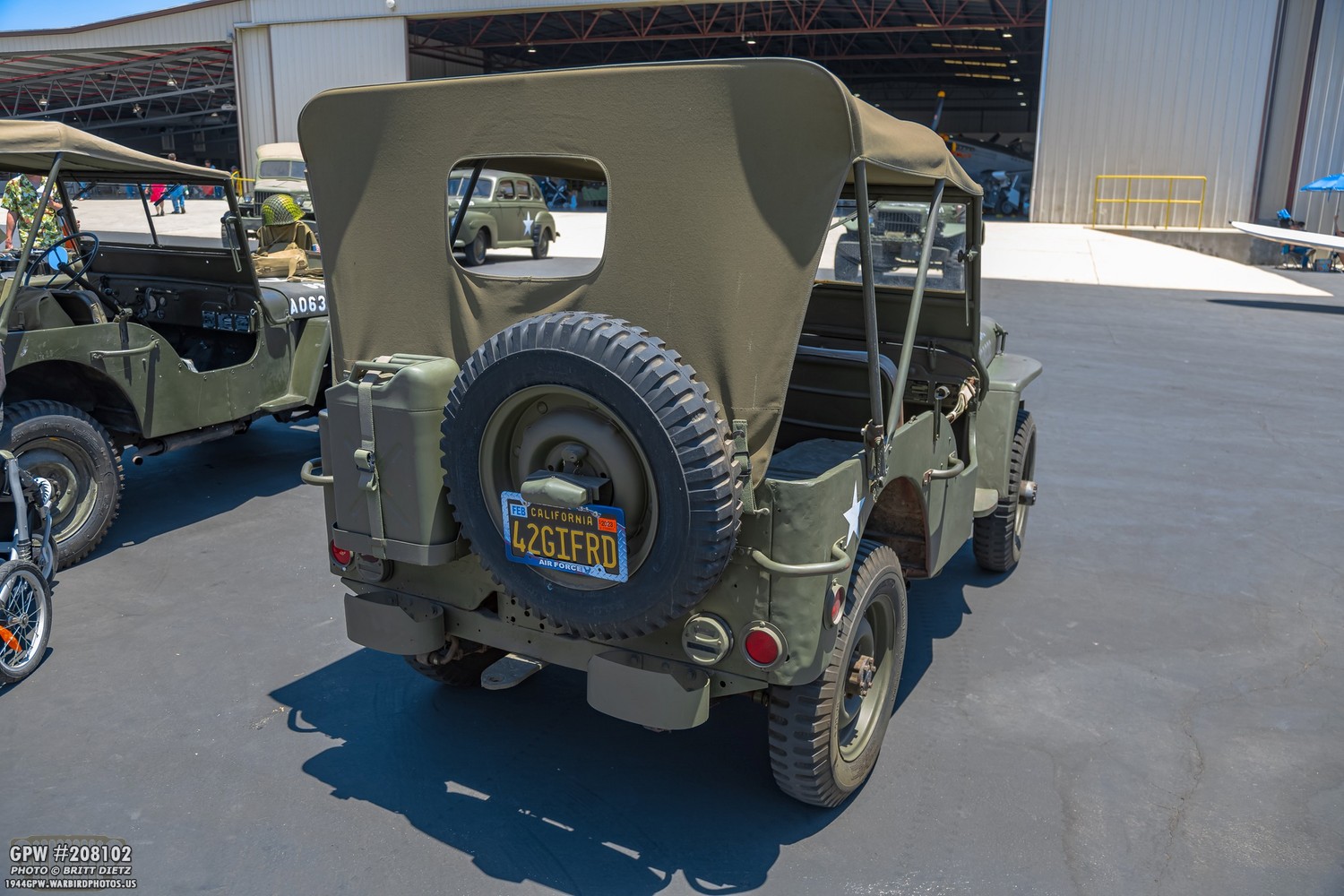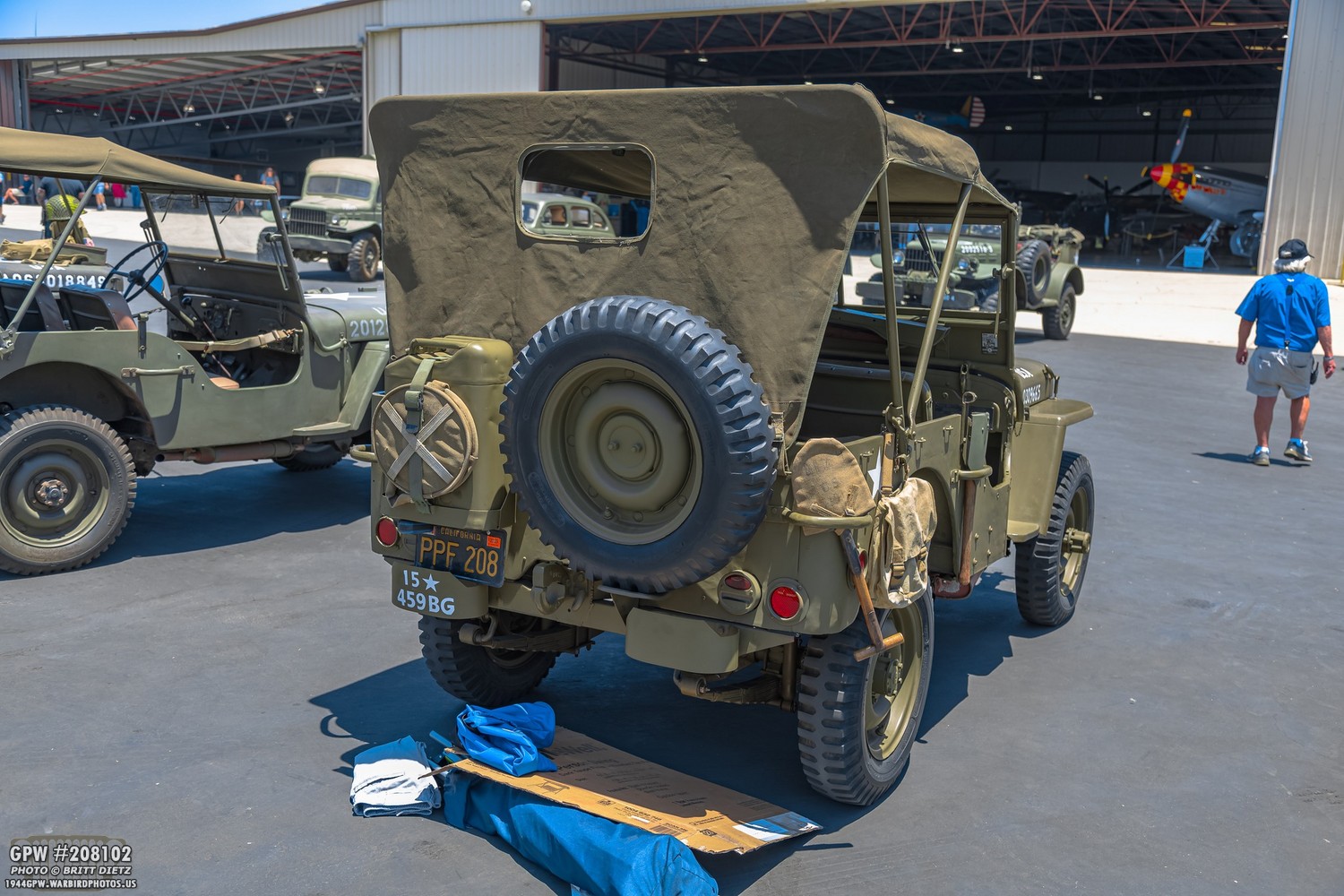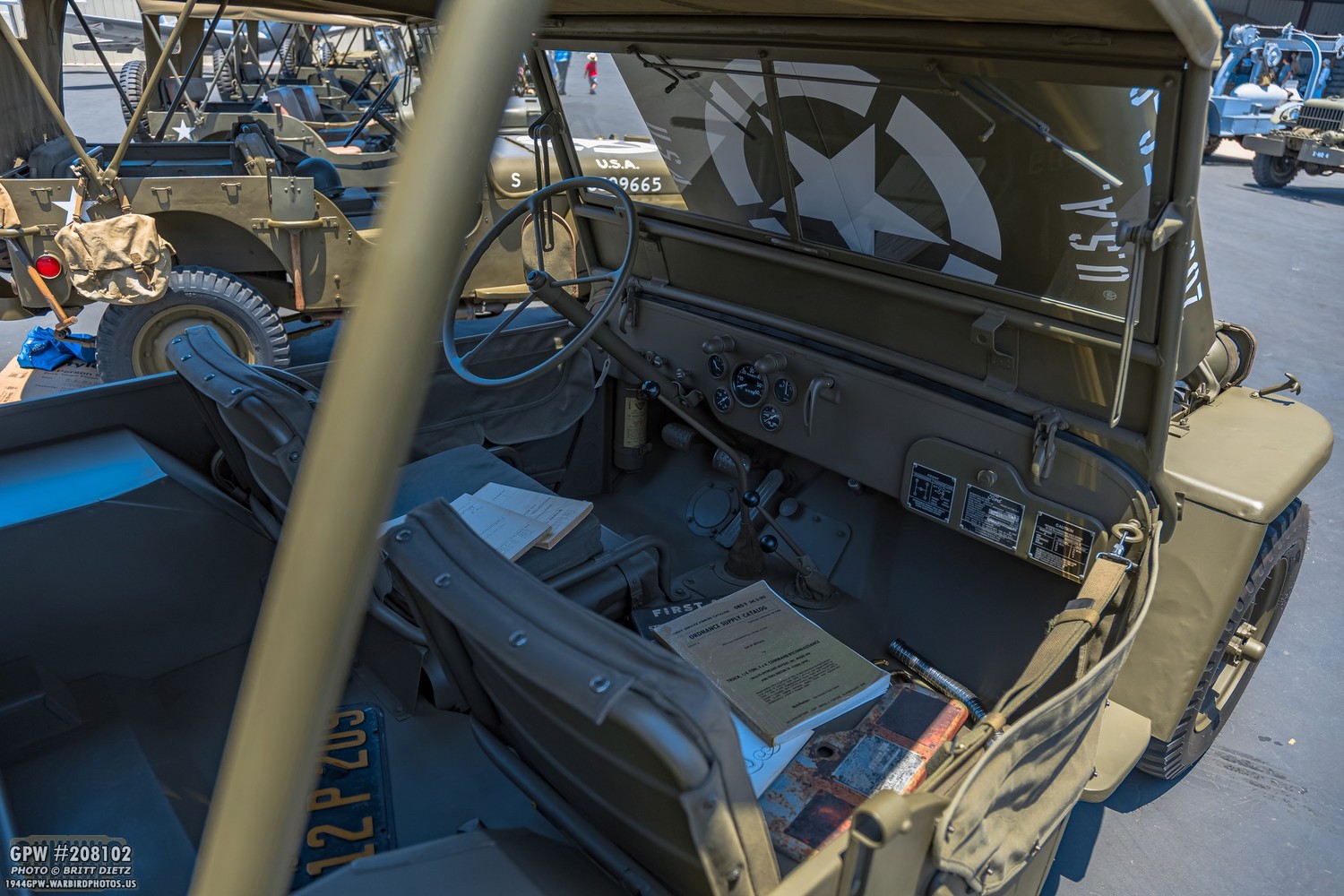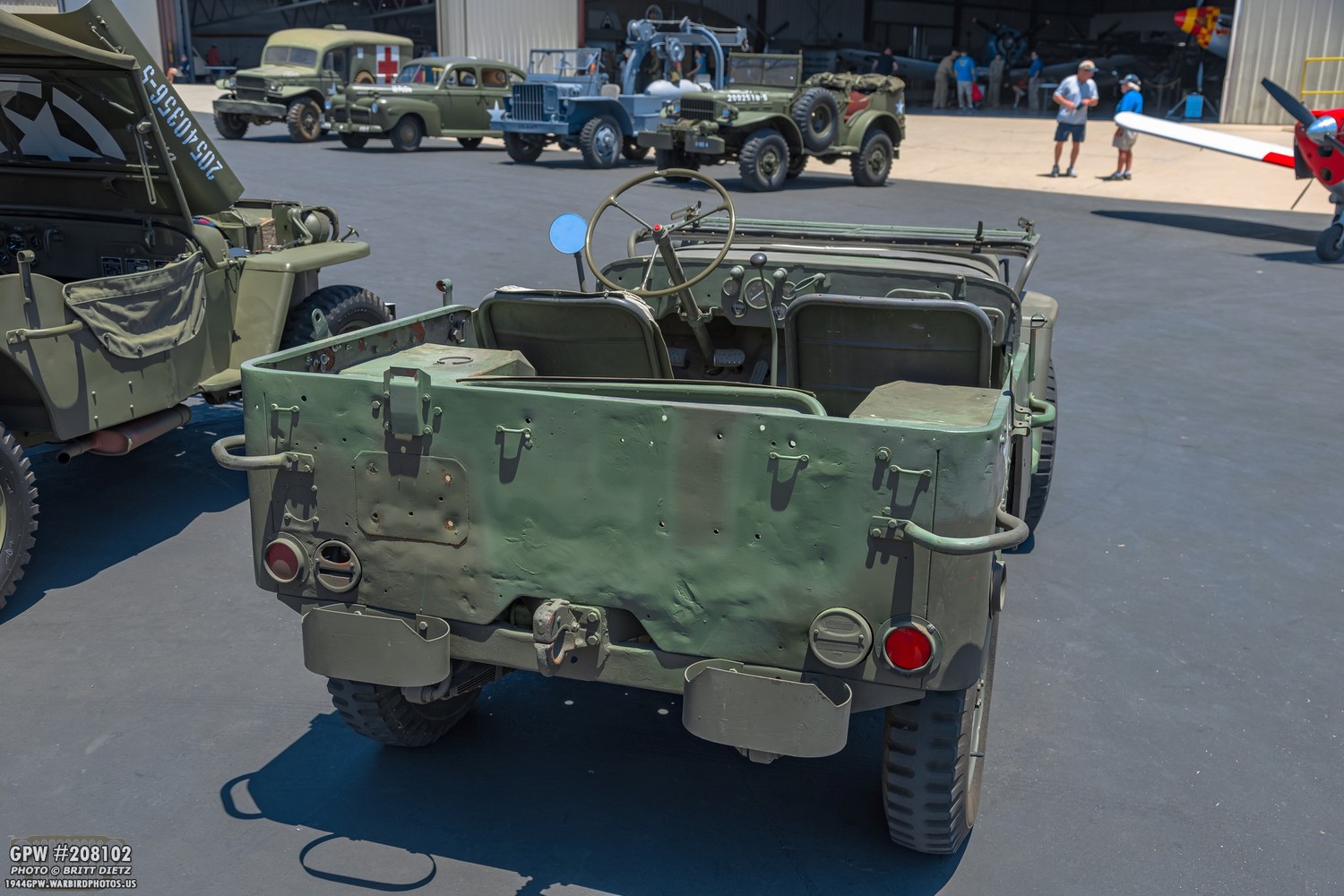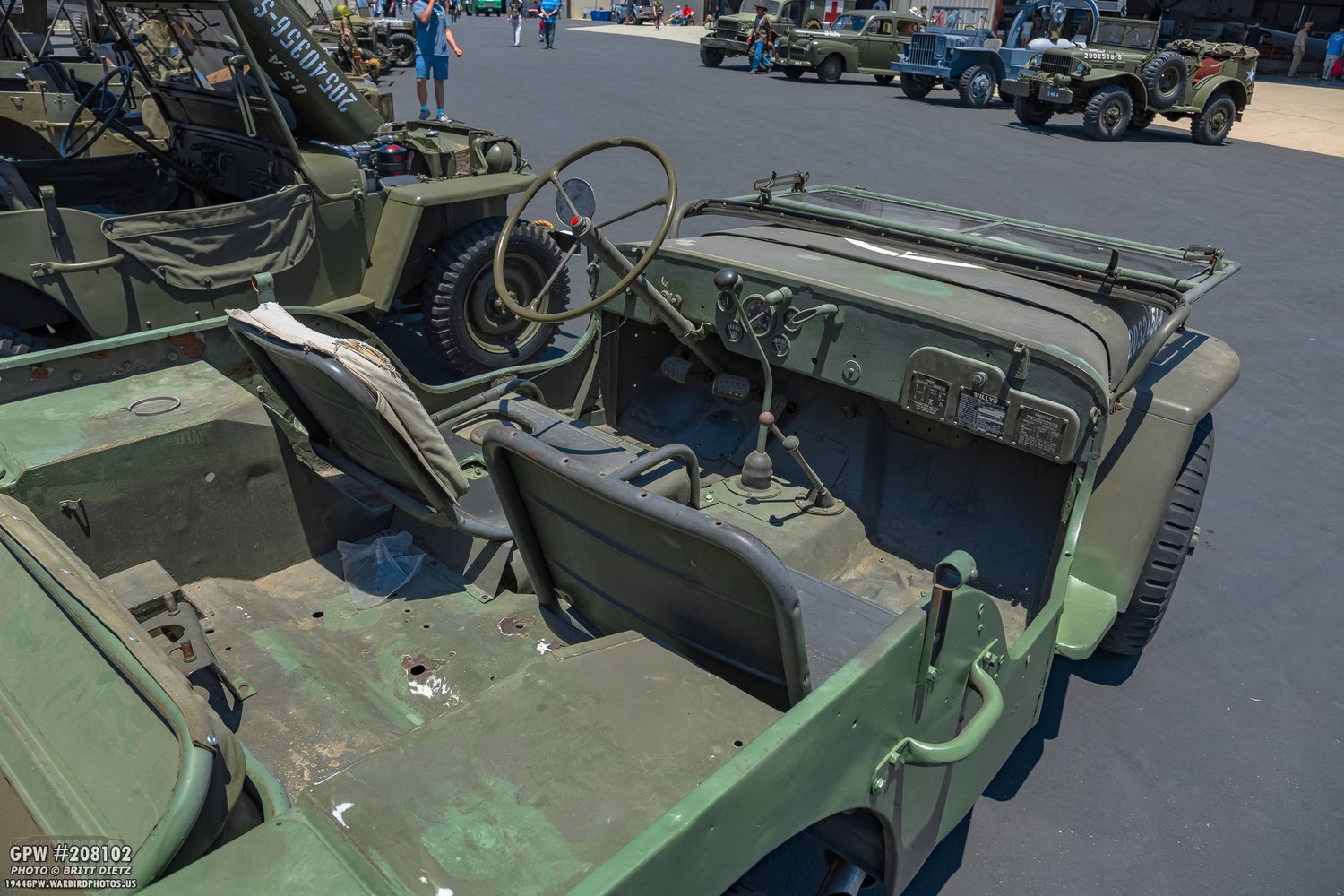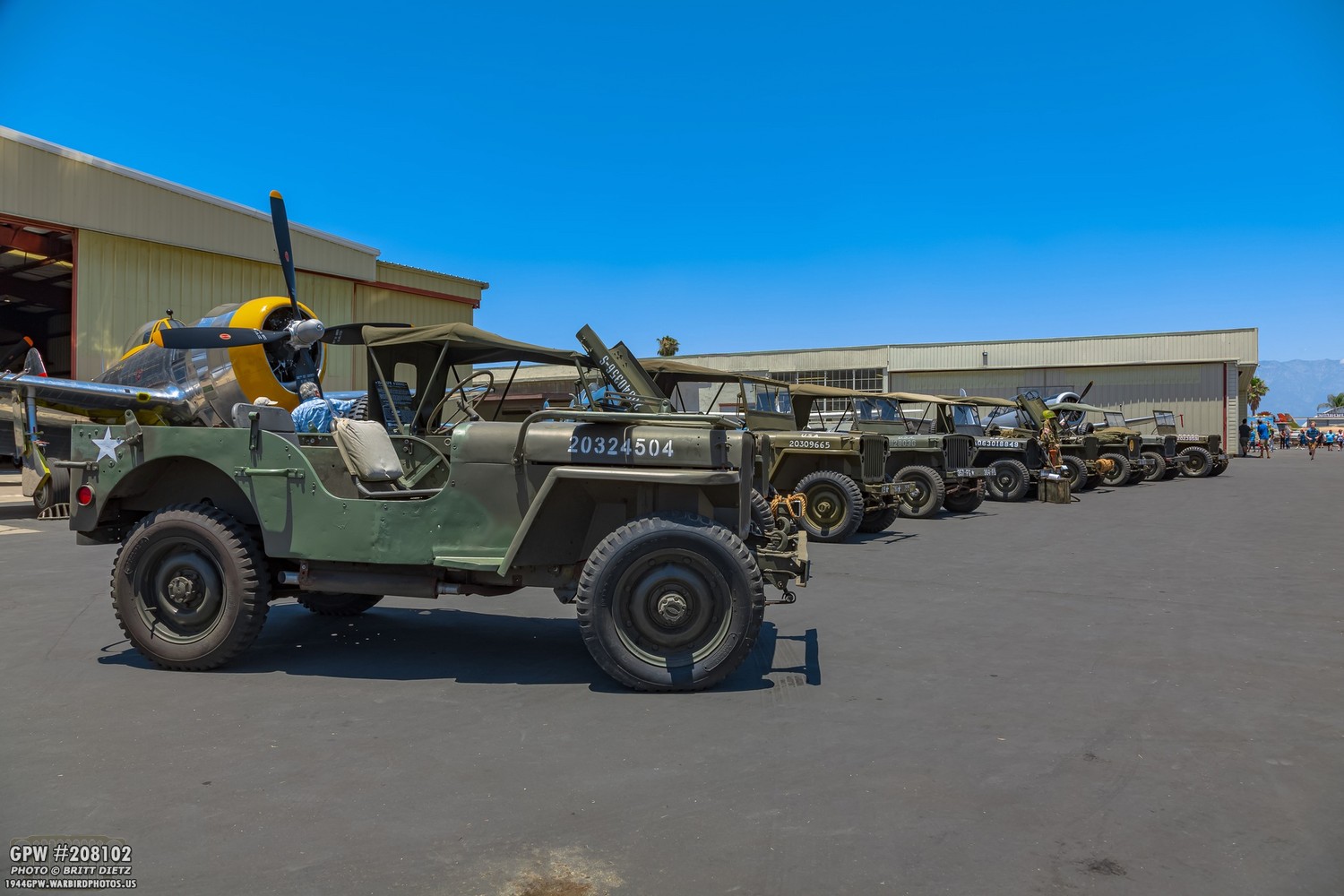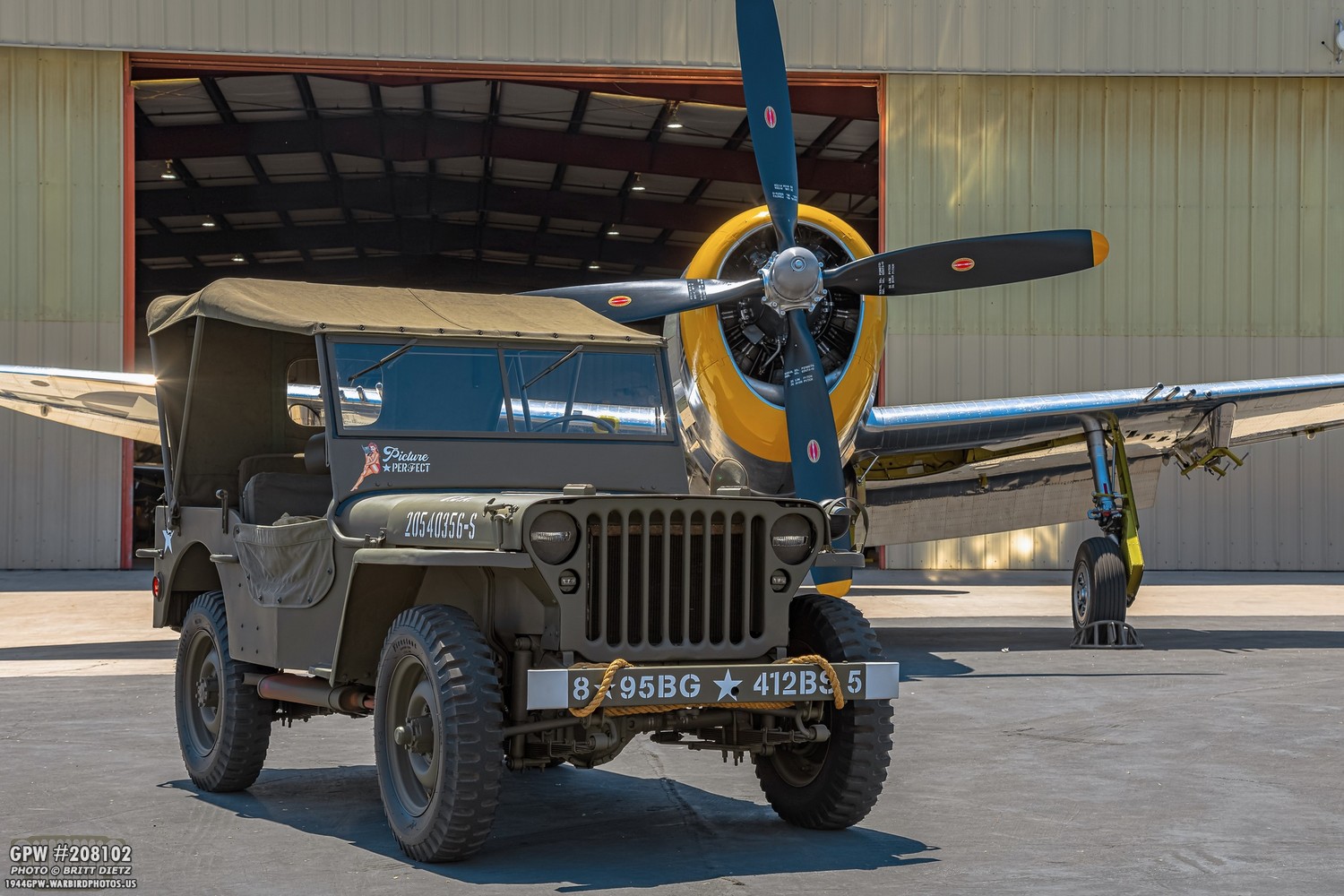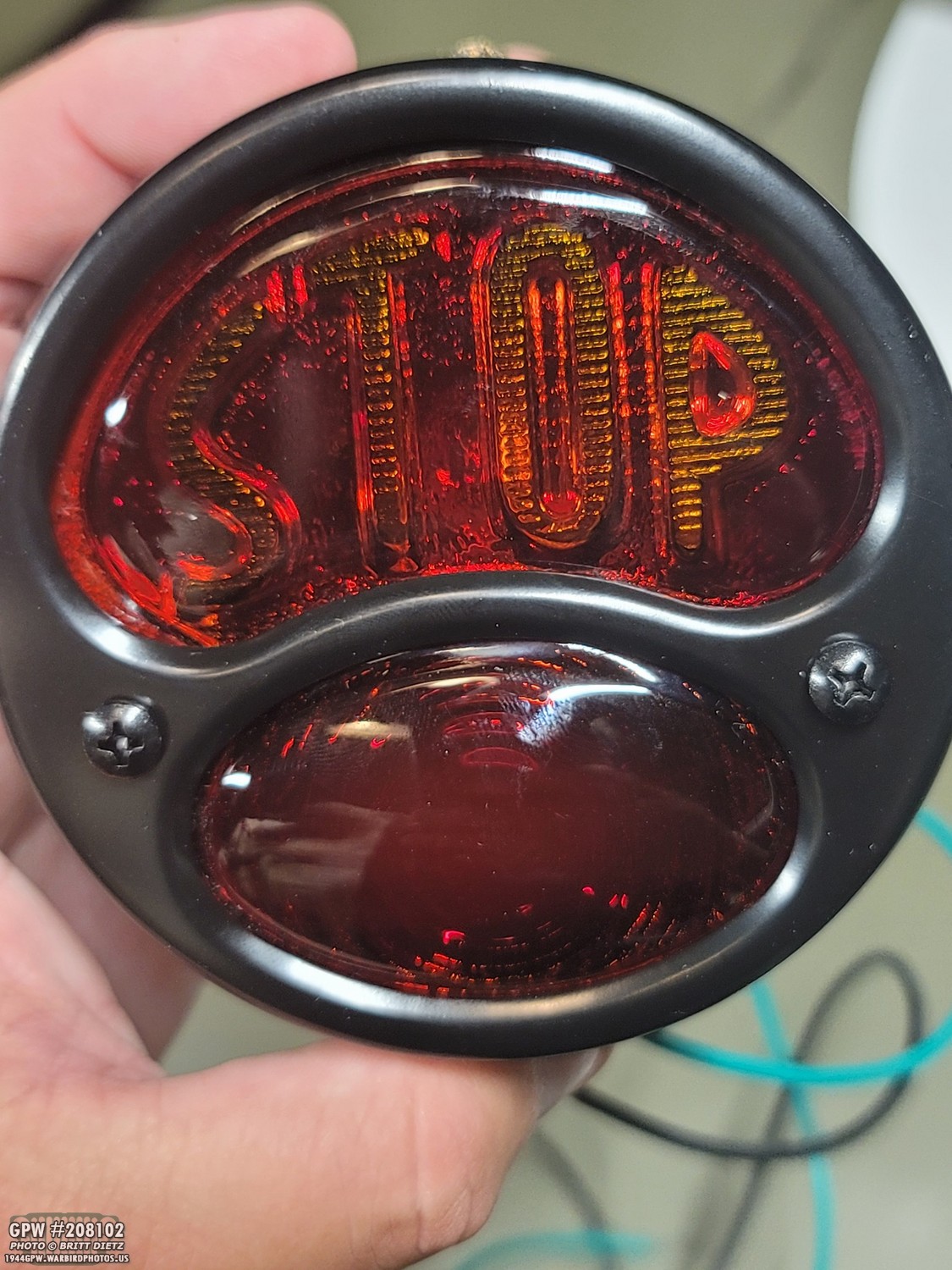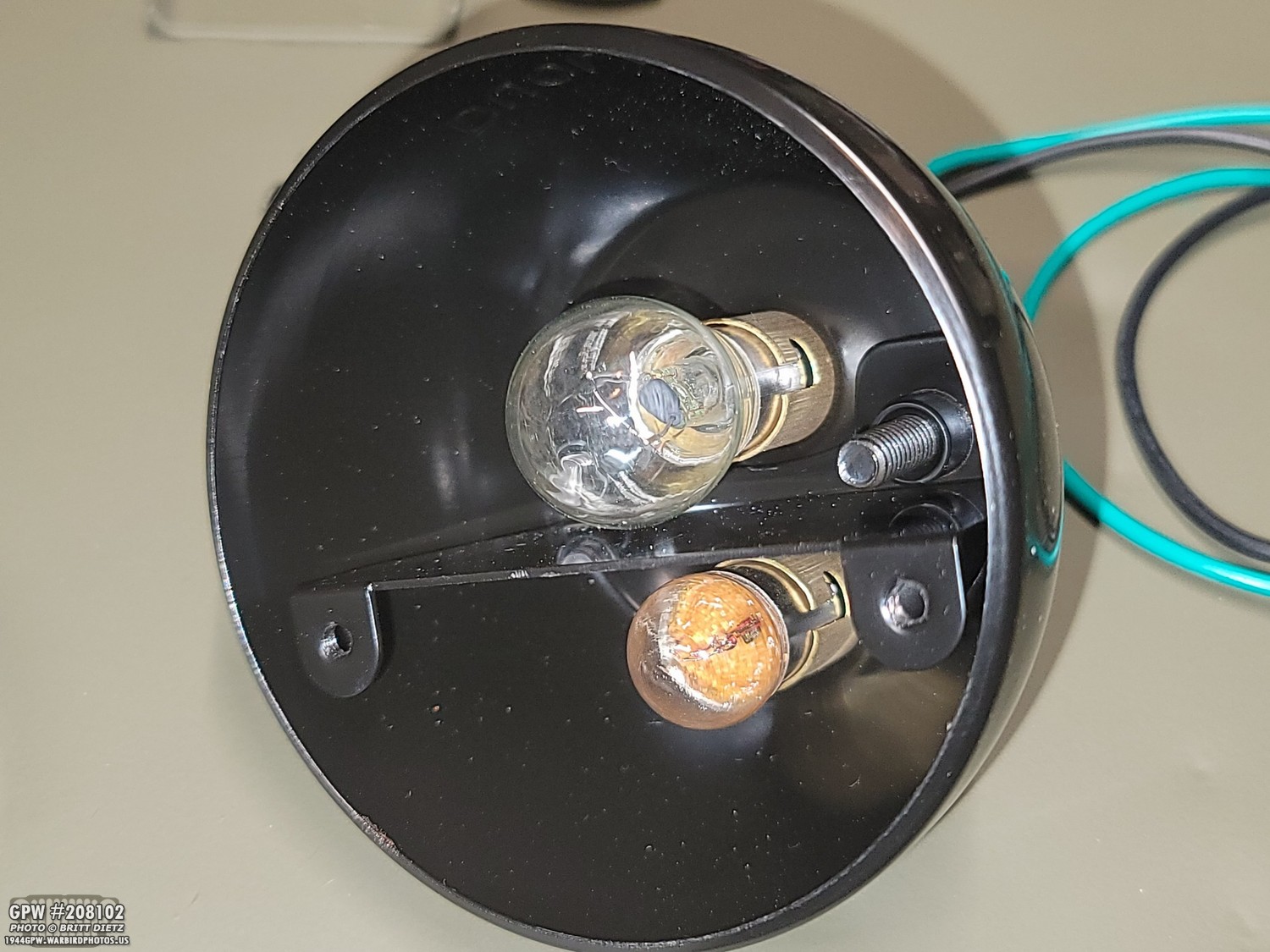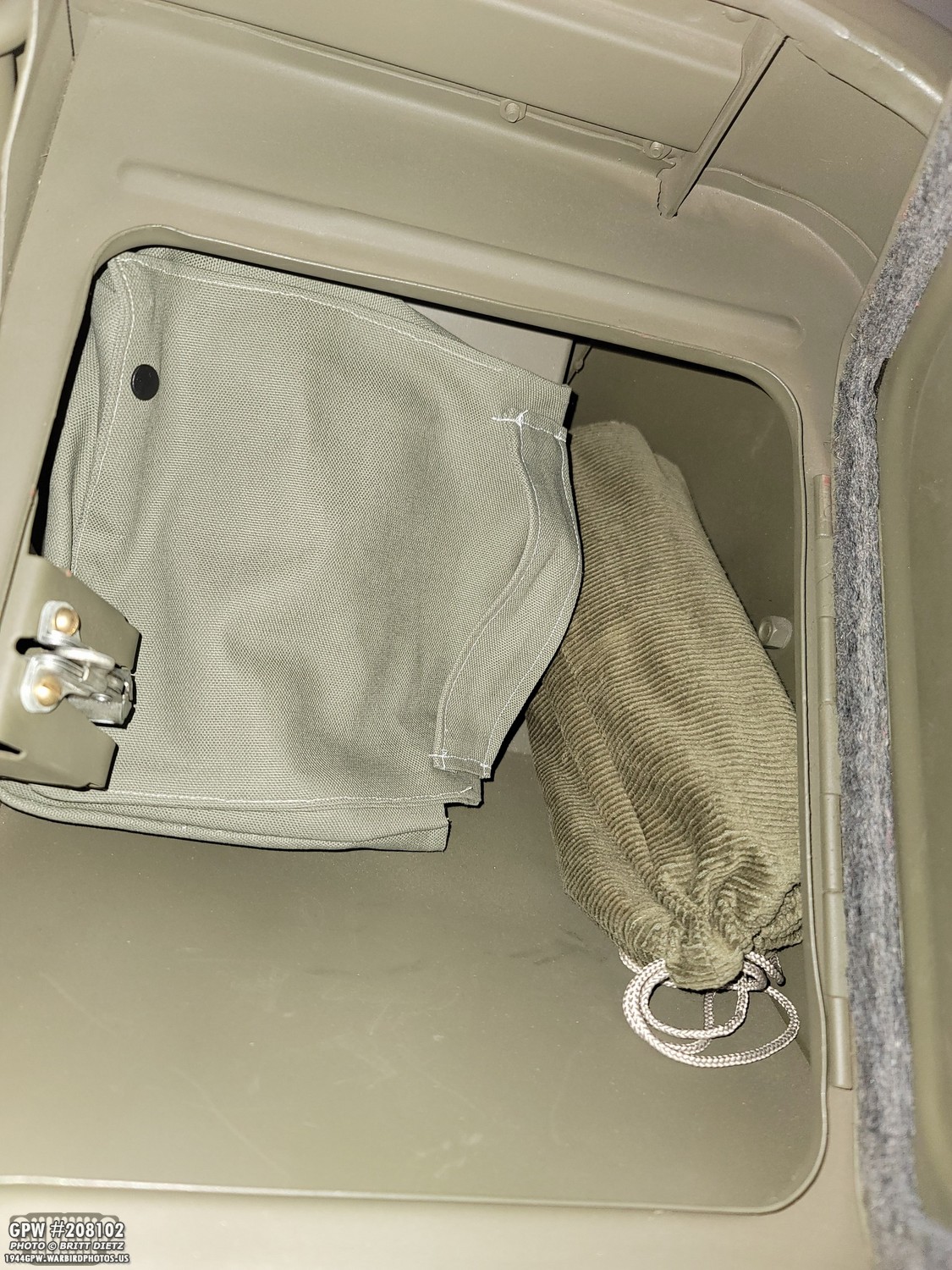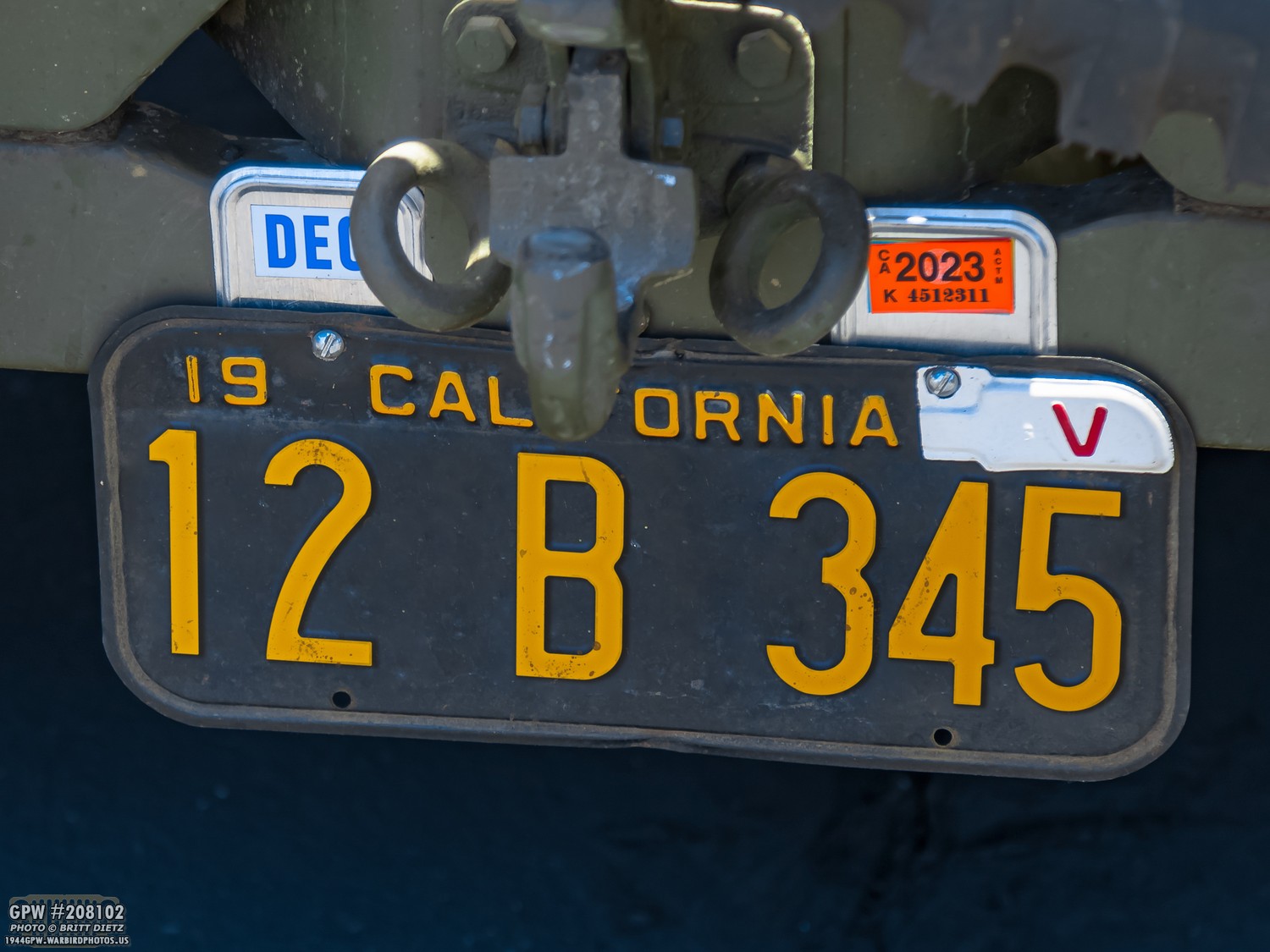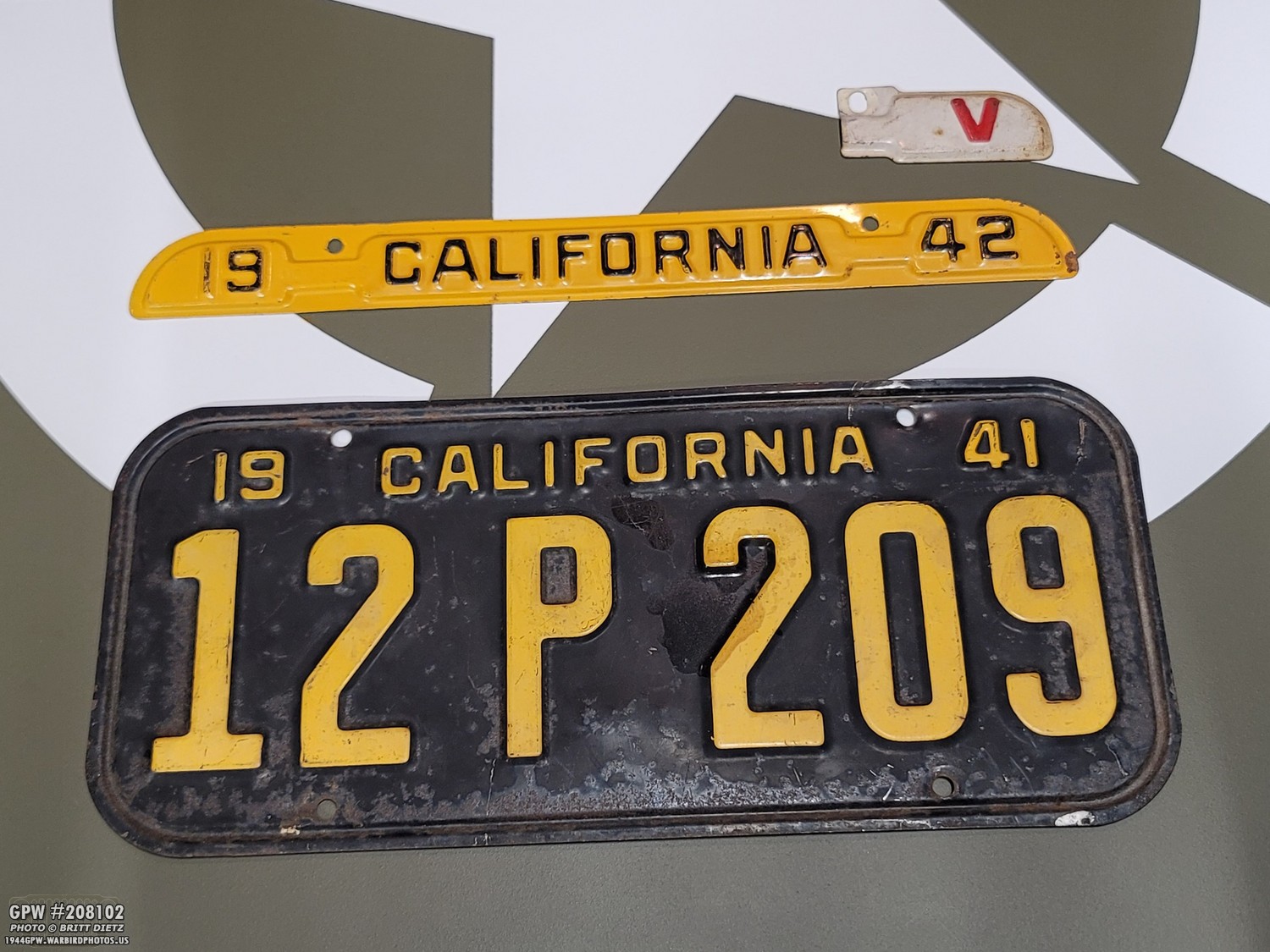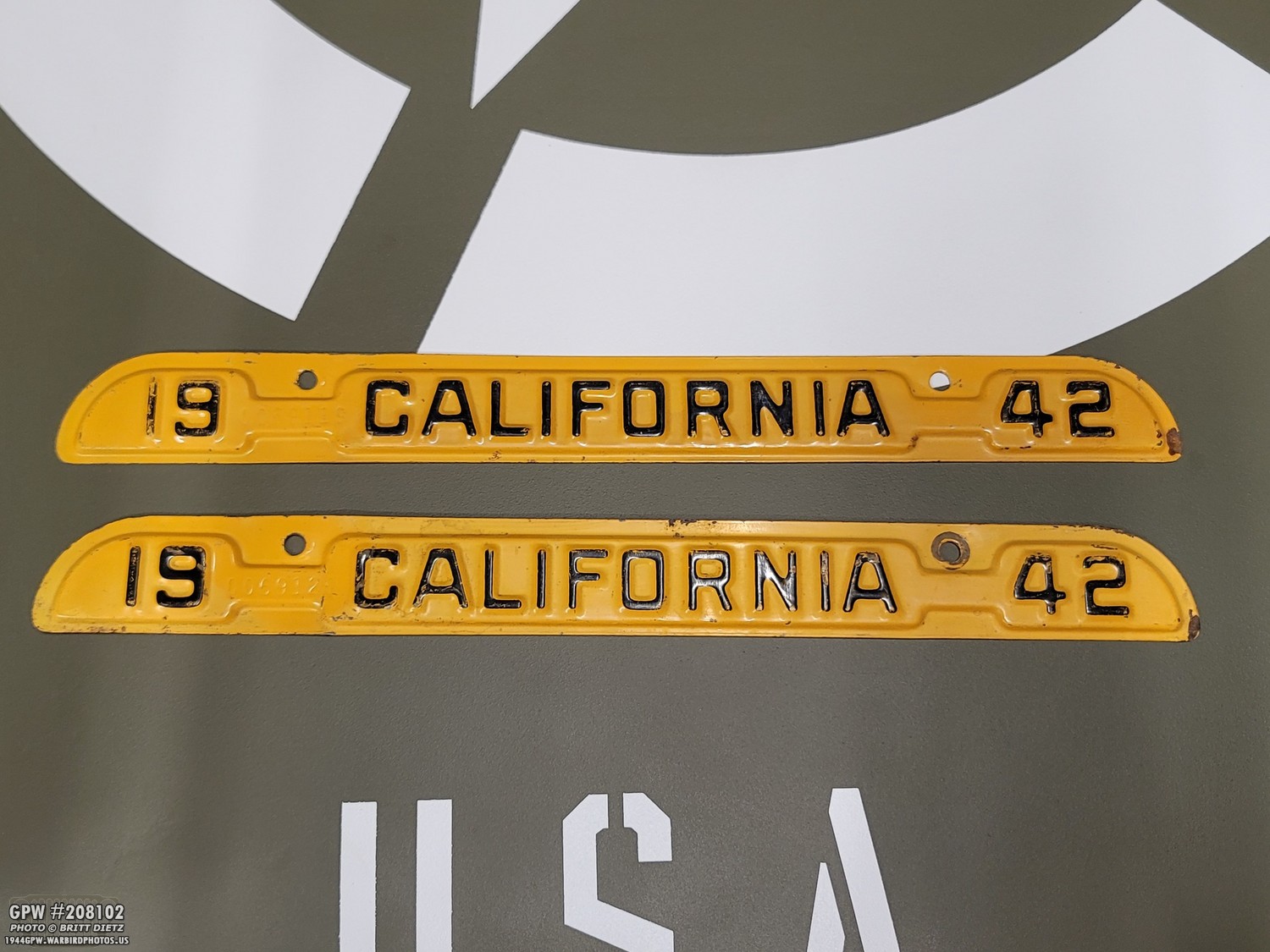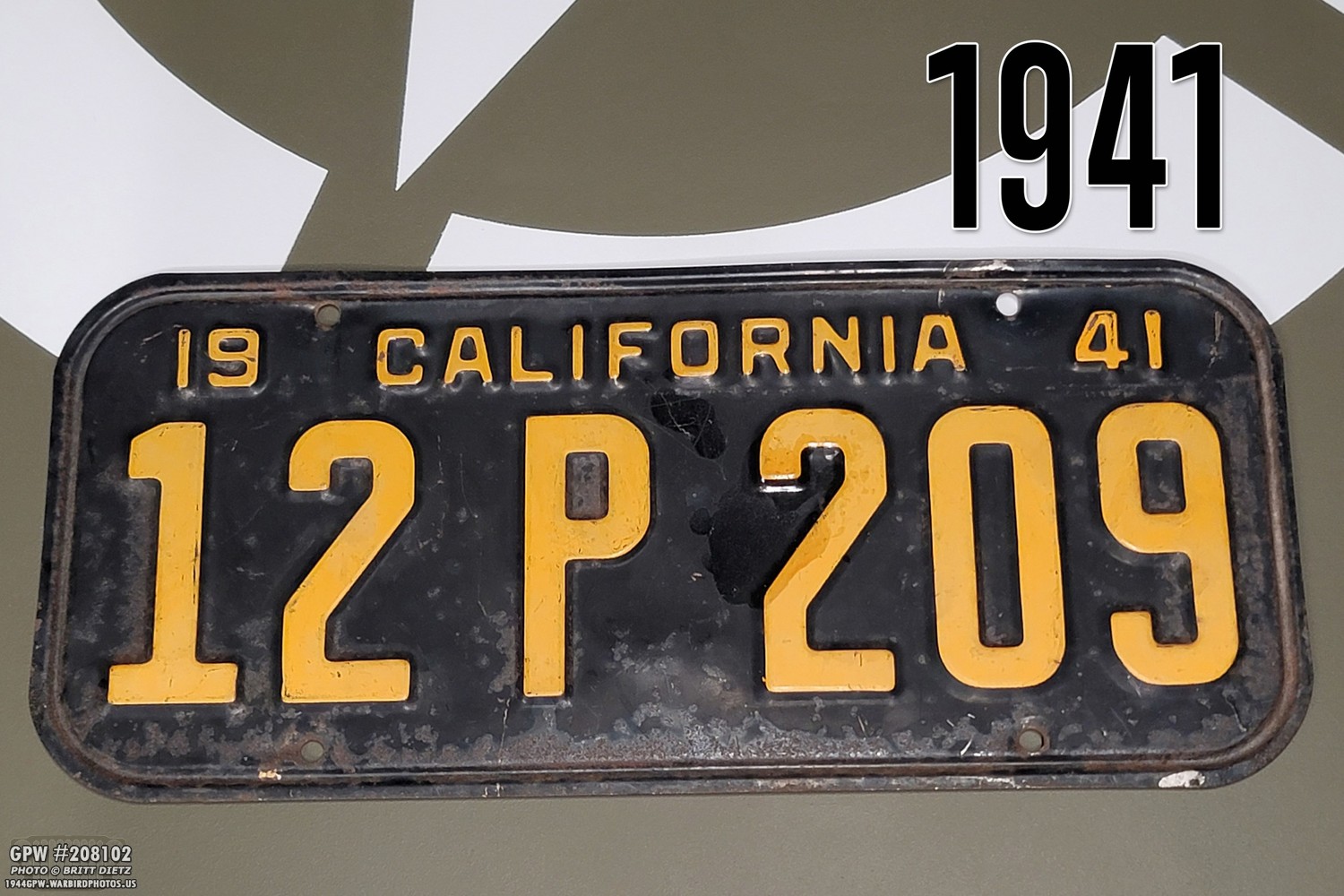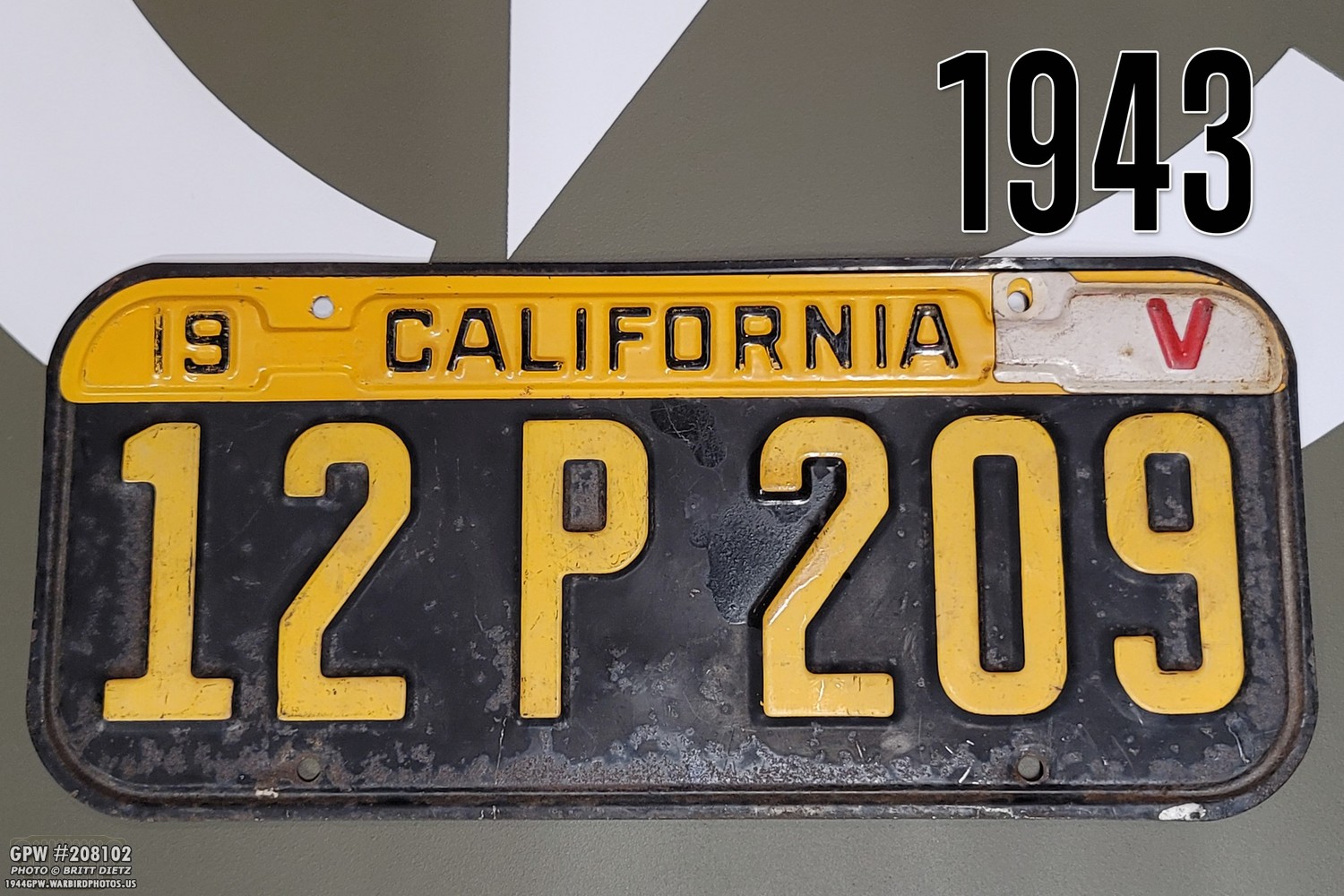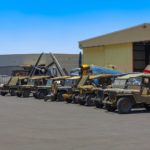 Planes of Fame Event, Night Stop Light, & 1940s California License Plates
Planes of Fame Event, Night Stop Light, & 1940s California License Plates
In this week’s update, I took the Jeep out to an event I helped put on at the Planes of Fame Air Museum which had TEN Jeeps! After a recap of the entire event, I show a new idea for safety in night-time driving. Finally, for those in California, I discuss license plates from 1940-1945 and how they changed each year.
A look at all the participating vehicles at the Planes of Fame Air Museum first annual Living history 2022: Wheels, Tracks, and Wings event held at Chino Airport, CA last Saturday, June 18th! My Jeep is second down from the top on the right side with the nine other jeeps. Let’s get into the event!
This event came about from an idea I had to raise some funds at the museum and also put on a Jeep meet at the Planes of Fame Air Museum to fill the void of lack of any military meets here in Southern California. I was given the date of June 18th for the event, and in less than a month’s time, I put the event together, contacted various vehicle groups, and invited reenactors.
Even though we had several vehicles set to attend along with reenactors, I wasn’t sure what to expect… even the crowd turn out! At the very least, my Jeep would be there! So I go out on the road nice and early to get there at 8am.
I brought my portable ammo crate radio out again with over 48 hours of 1940s music, wartime interruptions and news reports, and 1940s commercials. When I went to Flabob with the Jeep two weeks ago, I had to stop suddenly and the radio fell off the rear seat and slammed into the bottom floor scratching the tub floor, leaving a small gorge in the speaker, and tweaking the wood of the crate. Everything has since been repaired/repainted, but I didn’t take any chances this time and made sure the radio was secured in place.
When I arrived at the museum, only one other Jeep was there. Thankfully, they started to roll in (literally) as the 10am doors open time was getting closer. Here we are staging as the museum staff moves around some aircraft before we can park for display.
I was tasked with parking everyone, so I put all the Jeeps in a semi-circle in the courtyard of the museum. A P-40 Warhawk flanked the end. My Jeep is second down from the top.
Behind the Jeeps, the museum pulled out the Vought F4U-1A Corsair, and Allied Fighters on the airport brought over their amazing P-47 Thunderbolt ‘Dottie Mae’.
What a line-up of grills! This is the biggest gaggle of Jeeps I’ve seen in Southern California.
Nine Jeeps here, the tenth was near the Sherman Tank on the other side of the museum. I think the semi-circle alignment was perfect for people to walk in and out of each Jeep, and also be able to step into the center to get shots like this. While it looks like there are not many people at the event, this was taken after the event had ended.
So let’s go down the line and take a look at all the Jeeps! First up is a GPW Jeep in 96th Bomb Group, 338th Bombardment Squadron markings with the US Army Air Force.
A look at the backside of the Jeep. I always try to take several documenting shots of every Jeep I see. Makes for a nice reference library!
And a look inside.
Next up, is another GPW. This one is undergoing restoration and has spots of bondo and primer throughout.
A look at the backside. Almost looks like camo with the various colors.
And a look inside.
Another Jeep! This one is nicknamed the F’n Jeep because the owner made sure that every part that should have an F stamp does has an F stamp, even inside! It was a nice variation to see a Jeep with a lot on it.
A look at the backside. Note the license plate, we’ll get to that later.
And a look inside.
Next up, an early 1942 MB Jeep! Great to see a Slat Grill at the event representing the early Jeeps.
Backside. He has a California Historical Vehicle plate.
And a look inside. Always weird to see the early Jeeps that did not have a glove box!
The next Jeep is another MB Jeep! This person also brought a nice display with an 82nd Airborne Paratrooper uniform and a mine detector with a case!
A look from the back.
And a look inside.
Next up, another GPW Jeep! This one in the markings of the 357th Fighter Group, 364th Fighter Squadron with the US Army Air Force.
A look from the back.
And inside. Interesting seat cushions on the seats. They look a lot more comfy than the canvas ones.
Next up, another MB Jeep! This one is marked up in the 15th Air Force, 459th Bomb Group, 759th Bombardment Squadron, Jeep #7.
A look from the rear.
And inside. It always surprises me how rare it is to find Jeeps with rifle racks. It might be something more prevalent overseas, but around here it seems most people don’t have them.
Next up is my 1944 GPW Jeep!
For comparison, here’s the inside of my Jeep. I kept the hood open most of the day, people enjoyed seeing the engine bay. I also had several original TM and Ord9 manuals for the Jeep sitting on the seats along with my original unrestored glove box door. On the passenger floor, I had some Jeep accessories.
Next up, another GPW Jeep! This one was owned by one of the pilots at the museum.
It’s an interesting paint job with almost a two-tone effect to it.
And a look inside.
The last Jeep, which spent most of the day over by the Sherman Tank that was open for tours, is another early Jeep. An MB Slat Grill Jeep!
The Jeep was owned by one of the motorpool guys. You can see the Sherman Tank above the spare wheel.
And a look inside. There’s a look at all ten Jeeps that attended!
Here’s another look at the cool display of the Airborne uniform and mine detector setup.
And a look inside the engine of the 1942 MB Slat Grill.
In addition to the Jeeps, four other vehicles made it out to the event!
First up, a really nice 1942 Dodge Command Car.
If I had the room (and it wasn’t so expensive), I’d love to get one of these to do next myself!
I featured this amazing USN Ford 1943 GTB Purma Jeep bomb truck in the last update from the Flabob Grand Encampment event. He brought out the vehicle for this event as well. Such a neat-looking Burma!
And this incredible looking 1942 Ford Staff Car (Fordor). Another vehicle I would LOVE to have in my collection. I feel getting something like this might be easier than a command car.
Next to the staff car was the museum’s 1941 WC-54 Dodge Ambulance!
While I was trying to wrangle all the vehicles, I did spend a lot of time with my Jeep answering questions. It was great chatting with the guests.
I was blown away by the fact we got ten Jeeps to show up in one spot! And this is just the beginning, I hope we can get way more next time!
As a special treat for those who brought the vehicles out, we pulled out the Lockheed P-38J Lightning ’23 Skidoo’ and the vehicle owners could park in front of it to take photos of their vehicles with the lightning.
And the 1942 Slat Grill on its way out with the Lightning!
Of course, I took a moment to get some shots of my Jeep with ‘Dottie Mae’ before I left!
So a great event which brought out a HUGE amount of people! We had over 630 people show up for the event throughout the day (the event went from 10am-1:30pm). Couldn’t be happier, and can’t wait to plan the next one with even more. We have some great ideas in the works to make it even better! I really hope it turns into a ‘premiere’ vehicle meet-up in SoCal!
As I was driving home, the Jeep got a bit warm. Then again, it was also 85+ degrees out. She mostly stayed at 180, but a few times she spiked up to 190/195. I found down shifting into 2nd gear for a bit or even coming to a stop and switching to 1st gear would cool the engine up very quickly and get it back to 180.
Before the event, I took off my original steering wheel to repaint it. After a good sanding, I hit it with a few coats of 33070 OD Green. I found that after using the wheel the last few hundred miles, over time that lusterless look will start to turn smooth and glossy from the repeated rubbing of my hands. So this time, I decided to put a thick layer of matte clear coat over the OD Green. This should keep it protected for a while!
An idea I had with Roger Smith to help with the dangers of night driving in a Jeep is getting underway! While I try not to drive at night because of how dark the Jeep is (and without turn signals), I wanted to have a way to add some extra stop light that I can easily attach and take off without having the wire things or make permanent. Roger pointed me to these 12 volt Model T lights on Amazon.
There are two lights, the top is a bright stop light with the word STOP on it. The bottom is a turn signal.
Looking inside, here are the two bulbs. The two wires out the back are the load line with the power coming in to each bulb. The ground goes out through the rear screws (you can see one on the right).
Here are all the parts. So this is just the first step in getting one of these. My idea is to get a trailer socket plug with wire and splice the end of that with this stop light so it illuminates when I stop. So, how will this work?
My hope is to make it so I can plug the light into the trailer socket, then mount it on the spare tire. Super quick and easy to set up, and easy to take off without having to modify anything on my Jeep. Next up, I need to get a trailer plug and wire. More on that in a future update!
A few updates ago, I got a WW2 vehicle jack, very close to the Jeep style (possibly from an early CJ Jeep). It will work until I find an original Jeep jack. But I didn’t want it banging around in my tool box, so my talented mother made this case for it to not scratch the jack or the inside of the tool boxes from some OD Green fabric.
The jack fits inside this pouch very nicely. It’s double-lined so it protects the tub’s paint job.
And it fits nicely next to the case she made for the modern Automobile fire extinguisher in the driver’s side tool box. She’s going to redo the fire extinguisher case now that we have this better-looking fabric.
Moving on to the final part of this update, we’re going to take a look and see how the California license plate changed from 1940 to 1945. If you live in California and want to try using original plates for the year of your Jeep or WW2 military vehicle, this will show what you will need. Here’s the plate I mentioned earlier in this update on the back of the GPW. He registered a 1941 plate with the 1943 V for victory tab.
Let’s take a look at the plate differences from then and today. On top is an original 1941 pate. Below that is the modern ‘retro’ plate that is currently on my Jeep. Notice the modern plate is smaller AND the holes for mounting the plate closer together than the 1941 plate.
If you have a vehicle that was built between 1941 and 1943, you’ll need a combination of items shown here. Let’s break down what you’re seeing.
These plate toppers were issued in 1942 when the war effort demanded metal. The pair I recently got are pristine with very little rust.
These original 1942 tabs will have a serial number between the 9 in 19 and C in California. For 1943, cars were issued a small white corner tab with a red V for victory. So let’s go through each year starting with 1940.
1940: They were still issuing plates. This would be the end of the orange/yellow plates with black lettering. Since we did not enter the war until the next year, 1940 was not affected by war needs.
1941: Again, a plate was issued to all vehicles. This would be the last until 1945. The 1941 plate started the all-black plate with yellow-orange lettering. A switch of the previous plates from the 1930s and 1940. This plate was issued still even after the USA entered the war in December 1941.
1942: With the war effort in full effect, steel was needed so new/renewing vehicles were given a pair of top tabs which covered the 19 CALIFORNIA 41 on the base plate with 19 CALIFORNIA 42. These tabs had similar colors to the 1940 plate.
1943: Again, the war effort needed more and more steel. While people were also having to drive less and ration fuel, registered vehicles were supplied a pair of small white corner tabs with a red V for victory. This was put on top of the 1942 top tab on the 1941 plate.
1944: Steel was now critical to the war effort, so instead of anything using steel vehicles were issued an adhesive sticker that drivers were to put on their windshield. The other items (white corner tab for 1943, the 1942 topper, and the 1941 base plate) were kept as is.
1945: Finally in 1945, the need for a new plate and the wrapping up of the war allowed for new plates to be made. But instead of a set of two plates, this is one of the only years in California history where drivers were just issued ONE plate alone. This is also the only plate that you can register today with the DMV and only have ONE instead of a matching pair. The 1945 plate also started the new method of having one plate but changing the year with a tab or sticker. This practice continues today with only the year stickers changing each year when you renew your registration.
And there you have it, a look at the California license plate throughout the war years! With the end of that, we’ve also reached the end of this update! Look for next week’s update celebrating the Jeep’s 78th birthday and a special historic look visiting the filming locations from the 1965 series ’12 O’Clock High’ with the Jeep!
Till the next update…




